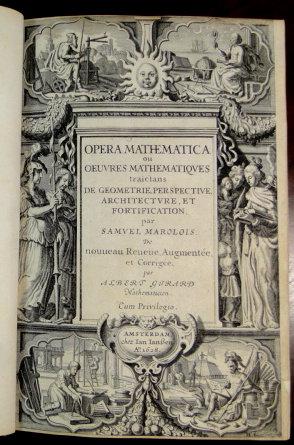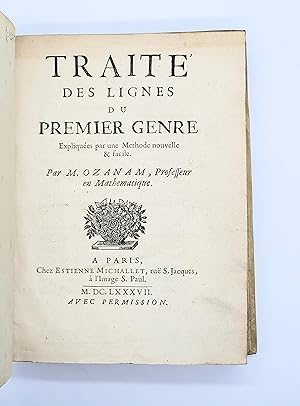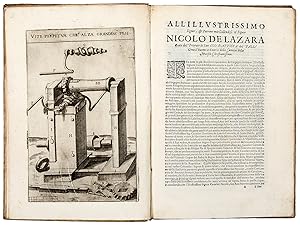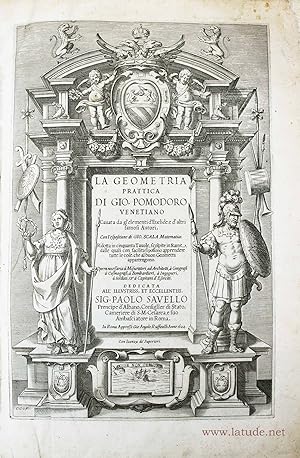mathematiques (174 résultats)
Type d'article
- Tous les types d'articles
- Livres (172)
- Magazines & Périodiques
- Bandes dessinées
- Partitions de musique
- Art, Affiches et Gravures (1)
- Photographies
- Cartes
-
Manuscrits &
Papiers anciens (1)
Etat
- Tous
- Neuf
- Ancien ou d'occasion
Reliure
Particularités
- Edition originale (64)
- Signé (6)
- Jaquette
- Avec images (150)
- Sans impression à la demande
Livraison gratuite
Pays
Evaluation du vendeur
-
Mémoires mathématiques ou enseignement nécessaire tant pour la géométrie, construction des fortifications, que d'autres sciences mathématiques
Edité par (Flandres), 1630
Vendeur : Hugues de Latude, Villefranche de Lauragais, France
Membre d'association : ILAB
*** Magnifique manuscrit inédit, écrit à l'encre brune et rouge, illustré de très nombreuses figures à la plume et de 40 peintures à mi-page. Ces aquarelles sont très certainement l'oeuvre d'un artiste professionnel. Minutieuses, d'un coloris vif, elles représentent des paysages, souvent en bord de mer, avec des châteaux, des églises, des moulins. et sont animées à l'occasion de personnages. C'est ici l'oeuvre d'un gentilhomme militaire dans les Flandres (françaises ou belges). Dans ces paysages, qui sont manifestement imaginaires, des éléments de l'architecture flamande apparaissent : une maison, un clocher d'église à bulbe, un beffroi. D'après le style de la reliure, le papier, la calligraphie et l'orthographe, nous pouvons dater ce manuscrit du début du XVIIe siècle. Ce qui correspond aussi aux costumes des personnages que l'on voit sur les peintures. Ces "Mémoires mathématiques" commencent par des rudiments de géométrie, suivie d'une partie pratique, celle qui est illustrée des 40 peintures, puis, une partie sur la construction des forteresses, et enfin un "usage de la règle géométrique ou de proportion, dite de pantomètre". Filigranes : la lettre B dans un écu couronné et, en contremarque, un huchet surmonté d'un trait étoilé. Briquet reproduit sous le n° 8074 un filigrane très proche avec cette même contremarque sur un manuscrit de 1596, à Maëstricht. De nombreux feuillets sont restés blancs en début et fin d'ouvrage, et en tête de chaque partie. Remarquable manuscrit pour ses illustrations, sa calligraphie et sa splendide reliure. *** In-folio de (218) pp. Maroquin noir, dos à nerfs orné, sur les plats, un motif doré au centre en forme de losange, avec des encadrements doubles avec fleurons aux angles, tranches dorées. (Reliure de l'époque.) - - - - - - - - - - - - - - - - - - - - - - - - - - - - - - - - - - - - - - - - - - - - - - - - - - - - - - - - - - - - - - - - - - - - * Unpublished manuscript illustrated by 40 splendid paintings. These watercolors are certainly the work of a professional. Detailed and brightly colored, they represent landscapes, often by the sea, with castles, churches, mills, etc., some animated by characters. This is the probable work of a military gentleman from Flanders (French or Belgian). In these landscapes, which are obviously imaginary, elements of Flemish architecture can be seen : a house, a bulbous church tower, a belfry. According to the style of the binding, the paper, the calligraphy and the handwriting, we can date this manuscript to the early 17th century. This also fits with the costumes of the characters that we see on the paintings. These "Mathematical Memoirs" begin with rudiments of geometry, followed by a practical part, the one illustrated in the 40 paintings, then, a part on the construction of fortresses, and finally a "use of the geometrical or proportional rule, called pantometer". Watermarks: the letter B in a crowned shield and, as a countermark, a huchet surmounted by a starry line. Briquet reproduces under n° 8074 a very close watermark with this same countermark on a manuscript of 1596, in Maëstricht. An outstanding manuscript for its illustrations and calligraphy. Splendid contemporary morroco binding. - -.
-
Mémoires Mathématiques, Contenant ce en quoy s'est exercé le très-illustre, très-excellent Prince et Seigneur Maurice Prince d'Orange, Conte de Nassau . translate en François par Jean Tuning
Edité par Jan Paedts Jacobsz, Leyden, 1608
Vendeur : SOPHIA RARE BOOKS, Koebenhavn V, Danemark
Membre d'association : ILAB
Edition originale
Hardcover. First edition. Double-entry bookkeeping. Very rare first edition in French of this collection of works, which was published almost simultaneously in Dutch, French and Latin. They deal, among other topics, with geometry, trigonometry, perspective, and double-entry book-keeping - Stevin was one of the first authors to compose a treatise on governmental accounting. The Appendice Algébraique, which Sarton called 'one of Stevin's most important publications,' is the first published general method of solving algebraic equations; it uses what is now called the 'intermediate value theorem,' a remarkable anticipation, as it was not rigorously formulated by mathematicians until the nineteenth century. All the works appearing in this volume were first published in this collection (with one exception, where the version here is the earliest extant - see below). Stevin (1548-1620) was perhaps the most original scientist of the second half of the 16th century (the major works of Galileo did not appear until the 17th century). "He was involved in geometry, algebra, arithmetic (pioneering a system of decimals), dynamics and statics, almost all branches of engineering and the theory of music" (Kemp, p. 113). "Stevin unconditionally supported [the Copernican system], several years before Galileo and at a time when few other scientists could bring themselves to do likewise" (DSB XIII: 48). In 1593 Prince Maurice of Nassau (1567-1625) appointed Stevin quartermaster-general of the Dutch armies, a post he held until his death. From 1600 Stevin organized the mathematical teaching at the engineering school attached to Leiden University. "The Prince used to carry manuscripts of [Stevin's lectures] with him in his campaigns. Fearing that he might lose them, he finally decided to have them published, not only in the original Dutch text [Wisconstighe Gedachtenissen] . but also in a Latin translation by Willebrord Snel [Hypomnemata mathematica] . and in a French translation by Jean Tuning [offered here]" (Sarton, p. 245). The Dutch and Latin editions were published in five parts, of which the fourth consisted principally of reprints of his works on statics that had appeared separately in 1586. This fourth part was not translated into French because, we are told at the beginning of the fifth part, of the printer's impatience - he was tired of keeping the sheets already printed and suggested that additional materials could be published later when the author had prepared them. The printer's impatience also accounts for the fact that several works that are announced on the title pages of the individual volumes did not in fact appear in the Dutch, French or Latin editions. The only other complete copy of this French edition listed by ABPC/RBH is the De Vitry copy, in a nineteenth-century binding (Sotheby's, April 11, 2002, lot 779, £15,200 = $21,935). OCLC lists Columbia, Harvard and UCLA only in US. Provenance: L. Cundier, early inscription on title-pages, i.e., Louis Cundier (c. 1615- 1681), French geometer, surveyor and engraver. He was professor of mathematics at Aix, and was responsible for a Carte géographique de Provence, published about 1640. Contemporary marginal annotation on R6v of final part. The first part of the work, entitled Cosmographie (1608), is a treatise on the trigonometrical techniques used in the observation of the heavens, together with extensive tables of sines, tangents and secants. "The first to use the term trigonometry seems to have been Pitiscus, whose book Trigonometria made its first appearance in 1595, but in 1608, when Stevin's book appeared, the term had not yet been generally accepted. The book consists of four parts, the first dealing with the construction of goniometrical tables, the second with plane triangles, and the remaining two parts with spherical trigonometry . It is mainly of interest to those who wish to see what trigonometry was like in the sixteenth century, long before Euler, in 1748, introduced the present notation. It also has some distinction as the first complete text on trigonometry written in Dutch; and one of the first - if not the first - written in any vernacular" (Works, IIb, p. 751). Part II, De la Practique de Géométrie (1605) [in Dutch, De Meetdaet], "is primarily a textbook for the instruction of those who, like Prince Maurice, wanted to learn some of the more practical aspects of geometry. The course was not one for beginners, knowledge of Euclid's Elements being a prerequisite, while the reader was also supposed to know something about the measurement of angles and Stevin's own calculus of decimal fractions . Parts of the contents were taken from the Problemata Geometrica, the book which Stevin published in 1583, but to which he, curiously enough, never refers. Other parts show the influence of Archimedes and of contemporary writers such as Del Monte and Van Ceulen. Although in accordance with the title strong emphasis is laid on the practical applications of geometry, many theoretical problems are discussed. For Stevin theory and application always went hand in hand. "The Meetdaet appeared in 1605, but it was drafted more than twenty years before. Already in the Problemata Geometrica Stevin refers to a text on geometry, 'which we hope shortly to publish' and in which the subject was to be treated by a method parallel to that used in arithmetic. At that time Stevin's L'Arithmétique was either finished or well advanced. We get the impression that in this period, 1583-85, Stevin decided to publish his full text on arithmetic, but of his text on geometry only those parts which he considered novel. The general outline of the two texts was laid out at the same time, and in close parallel. When at last the Meetdaet appeared, it had undergone many changes, resulting partly or wholly from lengthy discussions with the Prince of Orange. The underlying idea, however, remained the same. "In the introduction to the Meetdaet Stevin explains what he means by this parallelism of arithm.
-
Académie de l'Espée de Girard Thibault d'Anvers ou se demonstrent par Reigles mathematiques.
Edité par Elzevier, Leyde, 1630
Vendeur : Librairie La Jument Verte, Strasbourg, France
Membre d'association : ILAB
Académie de l'Espée de Girard Thibault d'Anvers ou se demonstrent par Reigles mathematiques sur le fondement d'un Cercle mysterieux la Theorie et Pratique des vrais et iusqu'a present incognus secrets du maniement des armes a pied et a cheval.A Leyde, imprimé en la typographie des Elzeviers, Au moys d'Aoust, l'an 1630. Le feuillet de titre indique 1628.Deux parties en un fort volume in-plano de (1) f. blanc + 1 feuillet de titre + 1 feuillet de portrait de l'auteur + 1 feuillet de dédicace + 9 feuillets d'armoiries + 3 feuillets de privilèges + 276 pp. (dont avertissement au lecteur) et 46 planches dont 45 en double page.Plein vélin, dos à nerfs, pièce de titre de maroquin rouge, double filet d'encadrement rouge sur les plats. Reliure légèrement postérieure.Format : 42 x 56 cmÉdition originale du plus somptueux des livres sur l'escrime et les combats d'épées jamais produit.Titre gravé par Schelte Adams Bolswert (Schelderie A. Bolsvert), un portrait de l'auteur gravé d'après Bailly, 9 planches d'armoiries de chacun des princes auxquels l'ouvrage est dédié. La première partie est illustrée de 33 planches, la seconde de 13 planches. Le tout gravé par Gelle, Lasman, Crispin de Pas, Bolswert, Stockius, Paenderen Haerlem et P. de Jode, etc Ouvrage spectaculairement imprimé par les frères Elzevier.Ce chef d'oeuvre de typographie brillamment illustré est une curiosité en tant que manuel d'escrime. Il tente de dépasser les règles complexes de l'école espagnole de l'époque."Somptueuse publication, imprimée en grands et beaux caractères sur un papier très fort, et recherchée encore aujourd'hui à cause des magnifiques planches dont elle est ornée" (Willems). De nombreux souverains et princes européens, dont les armoiries figurent en tête, apportèrent leur soutien à ce magnifique ouvrage. Plus de quinze artistes participèrent à la réalisation des planches, des lettrines, bandeaux et culs-de-lampe qui ornent le texte. Un des derniers adeptes de l'école espagnole d'escrime, dite aussi escrime euclidienne, fondée à la fin du XVIe siècle par Jéronimo de Carranza, Thibault d'Anvers base sa théorie sur celle du cercle magique. L'un des plus beaux livres d'escrime, remarquablement illustré. Références bibliographiques : Willems 302; Brunet V, 816; Lipperheide 2960.Provenance : Ex-libris "Moderatur et Urget" du XVIIIe siècle Hilaire Rouillé du Coudray (1716-1805). Paris, de Cuisy, de Boissy, dit le Marquis du Coudray. Maréchal de camp en 1761, lieutenant général en 1780, mort en émigration.
-
Couverture rigide. Etat : Très bon. Chine, Pékin, 1696.In-folio de (52) pp. Trace d'une petite galerie de vers anciennement restaurée. L'ensemble est monté sous forme de dépliant « à l'accordéon » (Leperello). Cachet rouge en tête du volume.L'album est protégé par deux plats en bois massif. Il est conservé dans sa rare reliure du XVIIIe siècle, identique à celle de la Bibliothèque Nationale, Département des Estampes. Pièce de titre en papier sur le plat supérieur.348 x 282 mm. --- Edition originale de cet album commandité par l'empereur chinois Kangxi en 1696, comportant ses poèmes et ses sceaux. Il y eut plusieurs tirages de cette édition et le présent exemplaire ne présente pas le tout premier tirage des bois.Il s'agit d'un ouvrage majeur de la littérature illustrée de la dynastie Qing (1644-1912) que le savant Yao Shi commenta de la façon suivante : « Que ceux qui verront cet album ne le regardent pas à la légère ».L'ouvrage présente 46 poèmes composés et calligraphiés par l'Empereur de Chine, Kangxi ??.Cet empereur, contemporain de Louis XIV, régna de 1662 à 1722. C'était un souverain tolérant qui laissa la Chine ouverte aux influences bouddhistes et chrétiennes en utilisant les connaissances mathématiques, géographiques et astronomiques des Jésuites. L'album est orné de 46 superbes gravures sur bois de grand format (24 x 24 cm) qui illustrent chacun des poèmes de l'empereur.Elles représentent les travaux des champs et la vie quotidienne des paysans chinois au XVIIe siècle. Ces gravures furent réalisées à partir de peintures sur soie de Jiao Bingzhen.Après avoir commandité la publication du présent album réunissant ses poèmes, Kangxi ordonna la gravure de répliques fidèles sur des planches de bois des superbes peintures sur soie de Jiao Bingzhen, ??? (1689-1726), afin de les diffuser sous forme d'imprimé. A cette époque, la sériciculture n'était plus la technique secrète jalousement gardée.Les peintures originales sur /// Chine, Pékin, 1696.Folio [348 x 282 mm] of (52) pp. Traces of a small worm track anciently restored. The whole is mounted as brochure "in the style of an accordion" (Leperello). Red stamp at the head of the volume.The album is protected by two solid wooden boards. It is preserved in its rare 18th century binding, identical to the one in the National Library, Engravings Department. Paper lettering piece on the upper cover. --- First edition of this album financed by the Chinese emperor Kangxi in 1696, enclosing his poems and his seals.There were several issues of this first edition and the present copy doesn't belong to the very first issue.It is a major work in the Qing dynasty illustrated literature (1644-1912) that the erudite Yao Shi commented as follows: "May those who look at this album do not treat it lightly".The work presents 46 poems composed and calligraphed by the emperor of China, Kangxi ?? This emperor, a contemporary of Louis XIV, reigned from 1662 to 1722. He was a tolerant sovereign who let China open to the Buddhist and Christian influences by using the Jesuits mathematical, geographical and astronomical knowledge.The album is composed of 46 large superb woodcuts (24 x 24 cm) that each illustrates the emperor's poems. They represent country works and the everyday life of the Chinese peasants in the 17th century.These engravings were made after silk paintings by Jiao Bingzhen.After having financed the publication of this album gathering his poems, Kangxi ordained the engraving of faithful replicas on wood boards of the superb silk paintings by Jiao Bingzhen, ??? (1689-1726), in order to distribute them printed.At this time, sericulture wasn't the most jealously kept secret technique anymore.The original paintings on silk are today lost, and this work is a xylographic reproduction ordained by the emperor Kangxi in 1696. The poems of the emperor, printed in the blank space above the engravings, were translated by Bernhard Fuehrer, f.
-
Introduction en l'art analytic, ou Nouuelle algebre de François Viete. Oeuure dans lequel sont veus les plus miraculeux effects des sciences mathematiques, pour l'inuention & solution, tant des problemes, que theoremes, proposez en icelles. Traduit en nostre langue & commenté & illustré d'exemples. Paris: J. Jacquin, 1629. [Bound with:] VIÈTE, François; VAULEZARD, Jean-Louis (translator). Les cinq livres des Zetetiques de Francois Viette. Mis en francois, commentez et augmentez des exemples du poristique, & exegetique, parties restantes de l'analitique. Soit que l'exegetique, soit traitté en nombres ou en lignes. Paris: J. Jacquin, 1630. [Bound with:] VAULEZARD, Jean-Louis. Examen de la Traduction faicte par Anthoine Vasset, des cinq Livres des Zetetiques de M. Viette. Paris: n.p. [J. Jacquin?], 1631
Edité par J. Jacquin, Paris, 1630
Vendeur : SOPHIA RARE BOOKS, Koebenhavn V, Danemark
Membre d'association : ILAB
Edition originale
Hardcover. First edition. THE FIRST FRENCH TRANSLATION AND EXPOSITION OF VIÈTE. First edition, very rare, and in an unrecorded 1629 issue (usually dated 1630), of the first vernacular translation and exposition of Viète's In artem analyticum isagoge (Tours, 1591), the earliest work on symbolic algebra, here bound with a first edition of Vaulezard's translation of Viète's Zeteticorum libri quinque (Tours, 1593), which gives examples of the application of his 'analytic art' to problems from Diophantus' Arithmetica. The third work is a scathing criticism by Vaulezard of a later translation of the Isagoge, published in 1630, by Anthoine Vasset (generally believed to be a pseudonym for Claude Hardy); in a lengthy introduction to his translation, L'algèbre nouvelle de Mr. Viète (Paris: Rocolet, 1630), Vasset criticized Vaulezard's translation, to which Vaulezard responded in his Examen (thus, Vasset's translation definitely post-dates Vaulezard's). The greatest French mathematician of the sixteenth century, François Viète (1540-1603) was "the first extensively to use letters of the alphabet to represent numerical quantities" (Hutchinson's DSB, p. 690), and "the first mathematician of his age to think occasionally as mathematicians habitually think today" (Bell, p. 99). Viète used letters "both for known . and for unknown quantities" and "this innovation, considered one of the most significant advances in the history of mathematics, prepared the way for the development of algebra" (DSB); it earned him the sobriquet "the father of algebra" (ibid.). Zetetica is a Greek word meaning "those things to be sought out", and zetetics is the process of transforming a problem into an equation. In his preface to Les cinq livres des Zetetiques, Vaulezard tells us that in addition to the Zetetica he has added the second and third part of the Isagoge, i.e., the sections dealing with poristics (proving theorems through equations) and exegetics (solving equations), and that he has printed Viète's words in italic and his own commentary in Roman so that the difference may easily be seen. The first edition of In artem analyticem isagoge is among the rarest of the important works in the history of mathematics, and is hardly ever seen on the market. A copy was offered a few years ago by a prominent New York dealer for $450,000, and another copy sold at a German auction at about the same time for â 200,000 (plus premium), exemplifying Haskell Norman's dictum that rare books come in twos; we know of no other copy on the market since a copy offered by Sotheran in the 1920s (later in the Turner Collection at Keele University and now in private hands). The present works are almost as rare on the market, and are in fact even rarer than the Isagoge in institutional collections. ABPC/RBH records only one other copy (Macclesfield) of Les cinq livres (Sotheby's, November 25, 2005, lot 2049, £3,120 = $5,506) and no other copies of the other two works. OCLC lists, in the US, Brown, Harvard, Michigan, & NYPL for Introduction en l'art analytic and Les cinq livres; and Brown & Harvard only for Examen. There is no copy of any of the three offered works on COPAC, which lists five copies of the Isagoge. In artem analyticum isagoge is "a text in which Viète proposed nothing short of a complete refashioning of algebra as it was then understood . Rather than viewing algebra merely as the search for solutions of particular equations, he understood it as the analysis of an actual theory of equations" (Katz & Parshall, pp. 236-237). "The most important of Viète's many works on algebra . [It] introduced the use of letters both for known quantities, which were denoted by the consonants B, C, D, and so on, and for unknown quantities, which were denoted by the vowels. Furthermore, in using A to denote the unknown quantity x, Viète sometimes employed A quadratus, A cubus . to represent x2, x3, . This innovation, considered one of the most significant advances in the history of mathematics, prepared the way for the development of algebra" (DSB). "If this seems reminiscent in principle of our modern notation of x, y, and z for unknowns and a, b, c, etc. for indeterminate magnitudes, a convention which we owe to René Descartes in the seventeenth century, it is important to recognize that Viète's symbols or 'species', unlike ours, carried explicit geometrical meaning. They had dimension, and only expressions of the same dimension were commensurate . To Viète's way of thinking, then, the addition of a one-dimensional unknown A to a one-dimensional indeterminate B was denoted simply by A + B (we would write x + b), but in two dimensions, the sum appeared as A square + B plane (or our x2 + b) and in three dimensions as A cube + B solid (or our x3 + b)" (Katz & Parshall, pp. 238-239). Perhaps the most important part of the work is chapter 4, in which "he presents a mode of calculation carried out completely in terms of 'species' of numbers and calls it logistice speciosa - in contrast with calculation using determinate numbers, which is logistice numerosa. Of significance for the formation of the concepts of modern mathematics, Viète devotes the logistice speciosa to pure algebra, understood as the most comprehensive possible analytic art, applicable indifferently to numbers and to geometric magnitudes" (DSB). Viete's 'Analytic Art' comprises three stages. At the first stage, zetetics, a problem, whether of arithmetic or geometry, is translated into Viète's newly created symbol system or logistice speciosa in the form of an equation. At the second stage, poristics, equations are transformed according to rules into canonical forms; and finally at the third, exegetics, a solution to the problem is found on the basis of the derived equation. As Viète himself emphasizes, at this third stage the analyst turns either geometer, 'by executing a true construction,' or arithmetician, 'solving numerically whatever powers, whether pure or affected, are exhibited.' "In 1593 Viète published.
-
Problematum Astronomicorum Libri Septem
Edité par Apud Bernardum Juntam, Io Baptistam Ciottum & socios, 1609
Vendeur : Rossignol, Paris, France
Livre Edition originale
Couverture rigide. Etat : Bon État. 1ere Édition. Venetiis, Apud Bernardum Iuntam, Io. Baptistam Ciottum, & Socios. MDCVIIII. Superiorum permissu. Reliure plein velin, dos à nerfs avec titres manuscrits. Dimensions: 22,5 x 33,8 cm. 1(f), titre avec vignette gravée, 1 feuille d'introduction, 4 feuilles d'index, 128 feuilles, 1(f). Erreur de numérotation de la feuille 17 à la feuille 40. Exemplaire complet de cette première édition, illustrée de très nombreuses gravures in texte. Habile restauration dans la marge du feuillet 22. Ouvrage prépondérant du maitre et ami de Galilée, Guidobaldo del Monte, ou Guidobaldi, ou encore Guido d'Ubalde1 (né le 11 janvier 1545 à Pesaro dans la province des Marches - mort le 6 janvier 1607 dans son château de Montebaroccio), Marquis del Monte, était un mathématicien, philosophe et astronome italien du XVIe siècle. Ses travaux de statique annoncèrent la notion de travail mécanique. Il développa de nouvelles méthodes de calcul du centre de gravité pour des surfaces et des volumes variés. Il était sûrement, d'après Galilée lui-même, un des plus grands spécialistes de mécanique et mathématiques du 16ème siècle. Size: In Folio.
-
ACADEMIE DE L'ESPEE. OU SE DEMONSTRENT PER REIGLES MATHEMATIQUES SUR LE FONDEMENT D'UN CERCLE MYSTERIEUX LE THEORIE ET PRATIQUE DES VRAIS ET JUSQU'A PRESENT INCOGNUS SECRETS DU MANIEMENT DES ARMES A PIED ET A CHEVAL.
Edité par Leiden: B. & A. Elzevir. 1628, 1628
Vendeur : Charles Russell, ABA, ILAB, est 1978, Cirencester, Royaume-Uni
Livre
Two parts in one volume, large folio 21 x 16 1/2 inches. Full eighteenth century calf- worn, boards detached. Engraved portrait of the author, 9 plates of coats-of-arms, 46 plates (plates complete), all but one double-page, by Crispin de Passe (1), Wilhelm Jacob Delff (3), J. Gilli (6), Crispian Quebon (6) and others, divided into 33 sections in the first part, and 13 sections in the second, each separately paginated. Numerous condition issues- most minor- Lacking engraved title, portrait repaired, 4 plates with repairs, mostly on the verso, some outer marginal minor splits. The last plate creased and with some tiny old holes- to the last two plates. HOWEVER A GOOD WORKING OR BREAKING COPY OF THIS MASTERPIECE ON FENCING. Two plates are enlarged copies of emblematic engravings in praise of fencing produced for Thibault around 1615 and the remainder are of fencers in either Roman costume or period seventeenth century costume. The most sumptuous book on fencing ever produced: a triumph of the art of book production with inspired typography blending seamlessly with very fine engraving. These folding plates are the largest produced on fencing.
-
The Sector on a Quadrant. Or, A Treatise containing the Description and life of three several Quadrans; Each rendred many ways both General and Particular. Accomodated for Dyalling, for the resolving of all Proportions Instrumentally, and for the ready finding the Hour and Azimuth universally, in the equal Limb. Of great use to Seamen, and the Practitioners of Mathematiques.
Edité par J. Macock, 1658
Vendeur : Bruce Marshall Rare Books, Cheltenham, Royaume-Uni
Edition originale
Hardcover. Etat : Very Good. 1st Edition. London, Printed by J. Macock, 1658. 4to, First Edition, First Issue, 6 engraved plates, one folding, woodcut diagrams, 4to, 4 parts in 1, Contemporary polished calf. Rarely found complete, in the first issue (with title dated 1658), John Collins (1625 1683), mathematician, was the son of a nonconformist divine, and was born at Wood Eaton in Oxfordshire, 5 March 1625. Apprenticed at the age of sixteen to Thomas Allam, a bookseller, living outside the Turl Gate of Oxford, he was driven to quit the trade by the troubles of the time, and accepted a clerkship in the employment of John Marr, clerk of the kitchen to the Prince of Wales. From Marr he derived some instruction in mathematics, but the outbreak of civil war drove him to sea for seven years, 1642-9, most of which time he spent on board an English merchantman, engaged by the Venetians as a ship of war in their defence of Candia against the Turks. He devoted his leisure to the study of mathematics and merchants accounts, and on leaving the service set up in London as a teacher. In 1652 he published An Introduction to Merchants Accounts, originally drawn up for the use of his scholars. He next wrote The Sector on a Quadrant, or a Treatise containing the Description and Use of three several Quadrants. Also, an appendix touching Reflected Dyalling, from a Glass however posited (London, 1658); and The Description and Uses of a general Quadrant, with the Horizontal Projection upon it Inverted (1658). Collins built up an extensive network of correspondents spanning the British Isles and continental Europe, through which he disseminated and exchanged mathematical news and procured the latest publications. Among the members of his epistolary circle were to be found John Pell, James Gregory, Wallis, Isaac Newton, G. W. Leibniz, and R. F. de Sluse. Such was the pivotal role he came to play in the scientific life of Restoration England, that contemporaries called him Mersennus Anglus . His extensive collection of letters was seen by the Royal Society as an important source of evidence for establishing Newton s claim in the priority dispute with Leibniz over discovery of the calculus Wing C5381; Tomash & Williams C122 Provenance: Owen Phillips (ink name on title and B1); John Carter att ye signe of ye Bible without Compter barr att ye corner of Essex Street (ink inscription on rear pastedown).
-
Nouvelle découverte sur la lumière, Pour la mesurer & en compter les Degrés. Dédiée à Monseigneur le Duc de Chartres.
Date d'édition : 1700
Couverture rigide. Etat : Très bon. Paris, Louis Sevestre, 1700.In-12 de (11) ff., 69 pp., (3) pp. Relié en veau brun moucheté de l'époque, dos à nerfs orné de fleurons dorés, coupes décorées, tranches mouchetées. Coiffes légèrement émoussées. Étui en maroquin brun. Reliure de l'époque.157 x 90 mm. --- Édition originale de la plus grande rareté de cet ouvrage consacré à la photométrie.Martin, Catalogue de la bibliothèque de feu M. Burette, 5546 ; Monge, Dictionnaire de physique, IV, p. 293.C'est au XVIIe siècle que les scientifiques européens font les plus grandes avancées en termes d'étude de la lumière.La photométrie qui apparait à cette époque est dénuée d'instruments de mesures ; elle établira ses bases par comparaison de sources lumineuses.Puis, « c'est "frappé par l'invention du baromètre, du thermomètre et de l'hygromètre" que F. Marie s'était demandé si, à leur imitation, on ne pourrait trouver un moyen de mesurer la lumière ». (J-E. Morère, p. 339, La photométrie : les sources de l'Essai d'Optique sur la gradation de la lumière de Pierre Bouguer, 1729.)C'est ainsi qu'il créa le « lucimètre ».« En 1700 un capucin Jean François-Marie a donné plusieurs manières de réaliser des appareils qu'il appelle lucimètres ou photomètres. Tout ceci n'aboutira à la construction d'un appareillage utilisable que beaucoup plus tard ». Daumas, Les instruments scientifiques, 82.« Le premier qui ait eu l'idée de mesurer la lumière est un Capucin, le P. François Marie, qui publia en 1700 un petit écrit intitulé : "Nouvelle découverte sur la lumière [?]". Ce bon religieux qui ne parle, au surplus, qu'avec une extrême modestie de ses idées, propose dans cet ouvrage, qu'il appelle ?Lucimètre', deux moyens de mesurer la lumière, l'une par l'interposition d'un nombre de verres plans et transparens, propre à intercepter enfin toute la lumière ; l'autre, par le moyen qu'une quantité d'eau propre à produire le même effet ; ou même moyen /// Paris, Louis Sevestre, 1700.12mo [157 x 90 mm] of (11) ll., 69 pp., (3) pp. Bound in contemporary mottled brown calf, spine ribbed and decorated with gilt fleurons, mottled edges. Spine ends slightly rubbed. Brown morocco case. Contemporary binding. --- First edition of the utmost rarity of this work dedicated to photometry.Martin, Catalogue de la bibliothèque de feu M. Burette, 5546; Monge, Dictionnaire de physique, IV, p. 293.It's in the 17th century that European scientists make the biggest discoveries in the study of light.Photometry that appears during this time doesn't have any measure instruments; it will establish its bases by comparing light sources.Then, "it's struck by the invention of the barometer, the thermometer and the hygrometer" that F. Marie asked himself if, by imitating them, it wouldn't possible to find a means of measuring light". (J-E. Morère, p. 339, La photométrie : les sources de l'Essai d'Optique sur la gradation de la lumière de Pierre Bouguer, 1729.)This is how he created the "lucimeter"."In 1700 a Capuchin Jean François-Marie gave several ways of creating devices he calls lucimeters or photometers. This will lead to the construction of a usable device only much later". Daumas, Les instruments scientifiques, 82."The first one who got the idea of measuring the light is a Capuchin, F. François Marie, who published in 1700 a small treatise entitled: "Nouvelle découverte sur la lumière [?]". This good religious man who only speaks, moreover, very modestly about his ideas, gives in this work, called ?Lucimeter', two means of measuring the light, one with the interposition of a number of plane and transparent glasses, suited to intercept finally all the light; the other one, by using a quantity of water in order to produce the same effect; or even means of repeated reflections on polished surfaces, in enough quantity to weaken the light with known gradations."J. E. Montucla, Histoire des mathématiques, III, p. 538.Fine an.
-
Sphaera Mundi seu Cosmographia demonstratiua, ac facili Methodo tradita: In qua totius Mundi Fabrica, una' cum novis Tychonis, Kepleri, Galilaei, aliorumq; Astronomorum adinuentis continentur. Accessere I. Breuis introductio ad Geographiam. II. Apparatus ad Mathematicarum studium. III. Echometria, ide est Geometrica traditio de Echo.
Edité par Bononiae, Typis Seb. Bonomij, Sumptibus Hier. Tamburini, 1620., Bologna, 1620
Vendeur : Libreria Antiquaria Gonnelli, Firenze, FI, Italie
Etat : Buono (Good). 1. In-4°(mm 225x160), Carte [12] (l'ultima bianca), Pagine 445 ma (447) per ripetizione delle pagine 231-232, [1]. Titolo in rosso e nero, 1 grande tavola composta di due parti ripiegate della misura di mm 190x930, posta fra le pagine 78-79, molte figure scientifiche e astronomiche in legno nel testo. Alla pagina 227 la tavola nel testo manca della volvella. Legatura in pergamena solida antica e rimontata. Lievi gore d'acqua al margine di poche pagine iniziali, sguardie con pagine mss. antiche applicate, antico timbro " G.B. Proietti, Spoleto, (Pg)". Edizione originale, rara e ricercata. Carli-Favaro, 83. Cinti, 95 descrive la terza ediz. (Modena, Cassiani, 1635) facendo, però cenno anche alle ediz. precedenti. Riccardi I, 127. Thorndike VII, 49-51: "A new presentation was needel he said, in order to summarize the great recent progress in astronomy from discoveries made with the telescope. He cites Tycho Brahe and Kepler with respect and aftems refers the reader to them for further information. He discusses the satellites of Jupiter and Saturn, sundpots, and the new stars of 1572, 1600, and 1604." De Backer-Sommervogel I, 1436 (n.2) "G.B. (Bologne 1566- 1624 étudia, sous le P.Clavius, les mathématiques et les enseigna pendant vingt ans en particulier à Parme. le P. Riccioli fut son élève". Cfr. anche Mc Colley, I. Blancanus and the adoption of the word Telescope, in: Isis, 1938, v. XXVIII, p. 364. Book.
-
Divers ouvrages de mathématique et de physique. Par Messieurs de l'Académie royale des sciences
Edité par Imprimerie Royale, Paris, 1693
Vendeur : Hugues de Latude, Villefranche de Lauragais, France
Membre d'association : ILAB
Edition originale
*** Première édition. Elle comprend 31 essais, la plupart en édition originale par Roberval, Huygens, Picard, Frénicle de Bessy, Auzout, Ole Römer and Mariotte : 9 par Roberval, 8 par Huygens, 5 par Picard, 4 par Frénicle de Bessy, 2 par Auzout, 2 par Ole Römer et 1 par Mariotte. Après la mort de Frénicle et Roberval, leurs ouvrages, restés manuscrits, furent confiés à Picard. Ce dernier, étant mort en 1682, tous ces manuscrits passèrent entre les mains de La Hire, qui les a publiés dans le présent ouvrage, avec ceux de Picard et quelques mémoires de Huygens. Roberval n'a publié que deux ouvrages de son vivant. On trouve ici ses mémoires les plus importants, qui n'avaient jamais été encore publiés: - Observations sur la composition des mouvements. - Projet d'un livre de méchanique, traitant des mouvements composés. - Traité des indivisibles. - De Trochoïde ejusque spatio. DSB 11, 486-490. Ce volume contient aussi : Frénicle de Bessy: - Méthode pour trouver la solution des problèmes par exclusions. - Abrégés des combinaisons. - Des carrés ou tables magiques. DSB 5, 158. Picard: - De la pratique des grands cadrans par le calcul. - De mensuris. - De mensura liquidorum & aridorum. -Fragmens de dioptrique. DSB 10, 395. Huygens: - De la cause de la pesanteur. - Démonstration de l'équilibre de la balance. - Construction d'un problème d'optique. L'ouvrage s'achève sur un mémoire de Mariotte: - Règles pour les jets d'eau, qui est suivi de deux courts mémoires de Römer. Nombreuses figures dans le texte. Exemplaire aux armes de Louis XIV sur les plats (Olivier 2494, fer 10) et son fleuron entre les nerfs. L'Académie des Sciences fut fondée par Colbert en 1666 et reçut l'approbation de Louis XIV en 1699. Toutes petites piqûres de vers (de la taille d'une épingle) dans la marge intérieure, quelques feuillets brunis en début d'ouvrage, très discrètes restaurations à la reliure. Très bel exemplaire de ce livre fort rare. *** In-folio de (6), 518, (1) pp. Veau marbré, dos à nerfs orné, armes de Louis XIV dorées sur les plats, tranches mouchetées. (Reliure de l'époque.) - - - - - - - - - - - - - - - - - - - - - - - - - - - - - - - - - - - - - - - - - - - - - - - - - - - - - - - - - - - - - - - - - - - - * First edition of this collection of texts by Roberval, Huygens, Picard, Frénicle de Bessy, Auzout, Ole Römer and Mariotte. Most of them are published for the first time. Contemporary binding with the arms of Louis XIV. - -.
-
Traité de fortification contenant les fortifications regulieres irregulieres forts de campagne et profils.
Edité par sans éditeur, France, 1685
Vendeur : Librairie La Jument Verte, Strasbourg, France
Membre d'association : ILAB
Paris, 1685.In-4 de 174 ff.Plein veau, dos à nerfs orné de caissons et de fleurons dorés, tranches dorées. Reliure de l'époque.Coiffes et coins frottés, mors fendus.Important et imposant manuscrit sur les fortifications. Il débute par les bases mathématiques et géométriques et se termine par les principes de Vauban, Blondel et d'autres personnages illustres français.Le manuscrit comporte un très grand nombre d'illustrations à l'encre brune et noire dont certaines aquarellées. Illustrations à pleine page et en double page. Le texte est encadré de filets noirs.
-
La Chine, illustrée de plusieurs monuments tant sacrés que profanes, et de quantité de recherchés de la nature et de l'art. Quoy on à adjousté de nouveau les questions curieuses que le serenissime grand duc de Toscane a fait dépuis peu au P. Jean Grubere touchant ce grand empire. Avec un dictionaire chinois et françois, lequel est tres rare, et qui n'a pas encores paru au jour.
Edité par Amsterdam, J. Janssonius 1670. 1670, 1670
Vendeur : JF LETENNEUR LIVRES RARES, Saint Briac sur mer, France
Membre d'association : ILAB
Edition originale
1 vol in-folio (400 x 255 mm) de : 1 titre frontispice gravé ; [7] ff. (dont titre, préface, table) ; portrait de Kircher manquant (pas toujours présent pour cette édition) ; 367 pp. ; [12] pp. (table) ; 24 planches hors texte dont 2 cartes (certaines sur double-page ou dépliantes) ; très nombreuses vignettes gravées sur cuivre dans le texte. Mention manuscrite sur la page de titre : "D Arminy". Plein veau d époque, dos à nerfs orné et titré avec pièce de maroquin rouge, roulette sur les coupes. Première édition de la traduction française (édition originale de 1667) de l'un des travaux anciens les plus importants sur la Chine dû à Athanase Kircher (1602 - 1680), illustrant la fascination européenne pour ce pays à la fin du XVIIème siècle. Cette traduction française est due à François-Savinien d'Alquié et elle est augmentée des réponses du P. Johann Grüber, qui voyagea en Chine, et d'un dictionnaire chinois-français. Athanase Kircher est un des savants allemands les plus célèbres du XVIIe siècle parfois surnommé «le dernier homme de la Renaissance». Cet érudit, doté d'une mémoire prodigieuse et d'un esprit visionnaire, a passé sa vie à collecter et cataloguer les connaissances du monde, en utilisant un vaste réseau de correspondants pour recueillir des informations. Son uvre écrite est considérable et traite de sujets très diversifiés dans lesquels il a apporté de nombreuses contributions: l orientalisme, les mathématiques, la physique, la médecine, la philosophie, etc. "China Monumentis" est rapidement réédité et traduit en néerlandais, anglais et français, correspondant au présent ouvrage. Magnifiquement illustré, il couvre des sujets très variés: la langue chinoise, l'histoire, la religion, le gouvernement, l'architecture, les arts mécaniques et les merveilles naturelles de cette contrée. Il contient la première description de Lhassa et du Tibet central, par Dorville et Gruebe ainsi que la première mention dans une publication européenne du royaume du Népal. Le travail de Kircher sur la Chine a attiré l'attention d'un grand nombre d'Occidentaux sur les merveilles et les curiosités de l'Extrême-Orient, notamment la coutume des pieds bandés, le confucianisme, la Grande Muraille, la laque, la célèbre soupe "Nid d'hirondelle" et le thé. Ce livre représente une étape importante dans l'étude de la langue chinoise. Kircher a appris du missionnaire Michael Boym la désormais célèbre inscription nestorienne à His-an fu, qui montrait que les missionnaires chrétiens avaient atteint la Chine en 781. La transcription et la translittération de l'inscription His-an fu, imprimée ici pour la première fois, constitue le premier vocabulaire chinois jamais imprimé en Occident qui est également le texte le plus couramment utilisé pour l'étude du chinois jusqu'au XIXe siècle. L illustration se compose d un titre-frontispice, de 2 cartes dépliantes de la Chine ainsi que de 24 planches et de très nombreuses vignettes gravées dans le texte représentant des caractères asiatiques, des costumes, des divinités, des animaux, des plantes et les 10 fabuleuses incarnations de dieux hindous. Comme pour d autres exemplaires de cette édition, il n y a pas de portrait de Kircher. Bel exemplaire conservé dans sa reliure d origine. 1 vol. in-folio (400 x 255 mm) with : 1 engraved frontispiece title; [7] ff. (including title, preface, table); portrait of Kircher missing (not always present for this edition) ; 367 pp.; [12] pp. (table); 24 plates out of text including 2 maps (some on double-page or folding); numerous copper-engraved vignettes in the text. Handwritten note on title page: "D'Arminy". Contemporary full calf, spine ribbed, decorated and titled with red morocco, roulette on the edges. First edition of the French translation (original edition 1667) of one of the most important early works on China by Athanase Kircher (1602 - 1680), illustrating European fascination with the country in the late 17th century. This French translation was written by François-Savinien d'Alquié, and is enhanced by replies from Fr. Johann Grüber, who traveled in China, and a Chinese-French dictionary. Athanasius Kircher is one of the most famous German scholars of the 17th century, sometimes referred to as "the last Renaissance man". This scholar, endowed with a prodigious memory and a visionary mind, spent his life collecting and cataloguing the world's knowledge, using a vast network of correspondents to gather information. His written output is considerable, covering a wide range of subjects to which he made many contributions: orientalism, mathematics, physics, medicine, philosophy and more. "China Monumentis" was rapidly republished and translated into Dutch, English and French, corresponding to the present work. Magnificently illustrated, it covers a wide range of subjects: the Chinese language, history, religion, government, architecture, the mechanical arts and the natural wonders of this land. It contains Dorville and Gruebe's first description of Lhasa and central Tibet, as well as the first mention in a European publication of the kingdom of Nepal. Kircher's work on China drew the attention of many Westerners to the wonders and curiosities of the Far East, including the custom of bound feet, Confucianism, the Great Wall, lacquerware, the famous "Swallow's Nest" soup and tea. This book represents a milestone in the study of the Chinese language. Kircher learned from missionary Michael Boym the now-famous Nestorian inscription at His-an fu, which showed that Christian missionaries had reached China in 781. The transcription and transliteration of the His-an fu inscription, printed here for the first time, constitutes the first Chinese vocabulary ever printed in the West, and is also the most commonly used text for the study of Chinese until the 19th century. The illustrations include a title-frontispiece, 2 fold-out maps of China and 24 plates and numerous vignettes engraved in the text, depicting Asian characters, costumes, deit.
-
Couverture rigide. Etat : Très bon. Rennes, Pierre Hallaudays, 1653.6 parties en 1 volume in-4 de (8) ff., 120 pp., 40 pp., 24 pp., 56 pp., 70 pp., 40 pp., 1 planche gravée dépliante, nombreuses gravures sur bois dans le texte, ex libris manuscrit sur le titre. Vélin souple de l'époque, dos lisse. Reliure de l'époque.206 x 155 mm. --- Rare édition originale de cet important traité d'hydraulique.Jean François, (1582-1668), est un jésuite et mathématicien français. Devenu membre de la Compagnie de Jésus en 1605, Jean François enseigna les mathématiques et la philosophie au collège de la Flèche dès 1613. François enseignait les mathématiques en même temps qu'il étudiait la théologie. Il eut pour élève René Descartes, qui conserva pour lui un attachement certain. Nommé préfet des études à Nevers, Amiens et Alençon, il termina sa carrière au collège de Rennes. On soulignait généralement la clarté de ses exposés. « Comme on le voit, l'auteur appartient au clergé breton : jésuite, il présente son livre à ?Nosseigneurs des Etats'. On peut être étonné, au premier abord, d'entendre un ecclésiastique développer ex professo des questions délicates qui relèvent directement de l'art de l'ingénieur ; mais, à toutes les époques de notre histoire, l'hydraulique et la géodésie ont séduit plusieurs esprits éminents parmi les ministres de l'Eglise, et de nos jours, n'avons-nous pas vu l'abbé Paramelle perfectionner la ?Science des eaux' du P. François ?Les renseignements biographiques sont presque nuls sur le Père Jean François. Le P. Jean François naquit en 1582 à Saint-Claude en Franche-Comté : il n'était donc pas Breton, mais nous allons voir qu'il le devint de c?ur et presque de fait. Il fut admis en 1605 dans la Compagnie de Jésus à l'âge de 23 ans, et professa d'abord la philosophie et les mathématiques au collège de la Flèche, où il eut pour élève en 1610 l'illustre René Descartes qui conserva pendant toute sa vie le plus tendre a /// 6 parts in 1 volume 4to [206 x 155 mm] of (8) ll., 120 pp., 40 pp., 24 pp., 56 pp., 70 pp., 40 pp., 1 folding engraved plate, numerous woodcuts in the text, handwritten ex libris on the title. Contemporary limp vellum, flat spine. Contemporary binding. --- Rare first edition on this important treatise on hydraulics written by Descartes' teacher.Graesse, Trésor de livres rares, 629 ; Brunet, II, 1379.Jean François, (1582-1668), was a French Jesuit and mathematician. As he became a member of the Society of Jesus in 1605, he taught mathematics and philosophy at the college of la Flèche from 1613. François taught mathematics at the same time as he studied theology. He had René Descartes as a student, who retained a real attachment to him. Appointed prefect of studies in Nevers, Amiens and Alençon, he ended his career at the college of Rennes. The clarity of his lectures was generally emphasized. "As we see, the author belongs to the Breton clergy: a Jesuit, he presents his book to 'Our Lords of the States'. One may be surprised, at first sight, to hear a clergyman develop ex professo delicate questions which are directly related to the art of engineering; but, at all times of our history, hydraulics and geodesy have seduced several eminent minds among the ministers of the Church, and nowadays, have we not seen Abbé Paramelle perfecting the 'Science des Eaux' of Father François?Biographical information on Father Jean François is almost non-existent. He was born in 1582 at Saint-Claude in Franche-Comté: he was therefore not a Breton, but we shall see that he became one in heart and almost in fact. He was admitted into the Society of Jesus in 1605 at the age of 23, and first taught philosophy and mathematics at the college of la fleche, where he had as a pupil in 1610 the illustrious René Descartes, who for the rest of his life retained the most tender attachment to his former teacher. He was then appointed prefect of studies and governed the colleges of.
-
Archisesto per formar con facilita li cinque ordini d'architettura
Edité par Heredi di Dominico Amadio, Vincenza, 1627
Vendeur : Hugues de Latude, Villefranche de Lauragais, France
Membre d'association : ILAB
Edition originale
*** Première édition. Illustré par une gravure sur la page de titre, 2 gravures hors-texte, (une sur double page) et 50 gravures dans le texte. Une démonstration par Revese Bruto (1585-c. 1642) de la manière d'adapter le compas de proportion de Galilée au dessin d'architecture. Son instrument est illustré sur la page de titre et sur la double planche. Le compas de proportion a été inventé par Galilée en 1598. L'adaptation de Revesi Bruti de cet instrument comprenait la division de chaque côté de l'arc en quatre bandes (pour les arcs, les portes et les niches, les piédestaux et les corniches ), subdivisées chacune en cinq bandes supplémentaires, une pour chaque ordre. L'auteur prétendait qu'avec ce simple instrument, toute personne avec de modestes connaissances en mathématiques pouvait dessiner les ordres et les parties de ceux-ci avec la plus grande facilité et précision. (BAL RIBA, p.1627). Exemplaire aux armes de Jean Baptiste de Loyac, seigneur de la Bachellerie et de la Fage. (dans le Limousin, au XVIIe siècle). Un ex-libris plus tardif de la bibliothèque de Loyac sur la page de titre. Olivier 350 donne un fer un peu différent frappé aussi sur la reliure d'un livre italien. Dos refait à l'identique. Bel exemplaire. *** In-folio de (8) pp, 1 planche double, 100 pp., 1 planche. Veau, dos à nerfs orné, double filet doré encadrant les plats avec armes dorées au centre. (Reliure de l'époque.) - - - - - - - - - - - - - - - - - - - - - - - - - - - - - - - - - - - - - - - - - - - - - - - - - - - - - - - - - - - - - - - - - - - - * First edition. Illustrated by one etching on title page, 2 etching plates out of text, (one double page) and 50 etchings in text. A demonstration by Revese Bruto of how to adapt Galileo's proportional compass to architectural drawing. His instrument is illustrated on the title page and on the double plate. "The proportional compass, or architectonic sector. was invented by Galileo in 1598. Revesi Bruti's adaptation of this instrument involved the division of each side of the arc into four bands (for arches, doors and niches, pedestals, and cornices), each subdivided into five further bands, one for each order. With this simple device, the author claimed, anyone with a slight knowledge of mathematics could draw the orders and the parts thereof with the utmost ease and accuracy." (BAL RIBA, p.1627). - -.
-
Sinicae historiae decas prima res a gentis origine ad christum natum in extrema asia, sive magno sinarum imperio gestas complexa.
Edité par Munich, Lucas Straub pour Johann Wagner, 1658. 1658, 1658
Vendeur : JF LETENNEUR LIVRES RARES, Saint Briac sur mer, France
Membre d'association : ILAB
Edition originale
1 vol in-4° (193 x 154 mm) de : [6] ff. (faux titre, titre, privilège, au lecteur) ; 362 pp. ; [1] f. blanc ; [9] ff. (index). Plein veau 19ème, double filet doré sur les plats, roulette sur les coupes, dos à nerfs orné, titre de maroquin fauve. Édition originale de cet ouvrage en latin sur l Histoire de la Chine dû à Martino Martini (1614-1661), prêtre jésuite, missionnaire en Chine, premier géographe et cartographe moderne de la Chine. Cette Histoire de la Chine constitue la première partie d un projet titanesque que Martini n aura malheureusement jamais eu le temps de terminer et fait directement suite à son Novus atlas sinensis (Amsterdam, 1655), son ouvrage le plus célèbre qui fit sa renommée en tant que géographe et cartographe de la Chine. Composé de 17 cartes des différentes provinces de Chine et agrémenté de nombreuses pages de texte, c est la description la plus complète de la Chine connue à l époque. La qualité de ce travail de Martini est telle que même un siècle plus tard il est toujours le plus complet jusqu alors. Après ce travail d envergure sur la Chine de l époque, l auteur se lance dans la rédaction de sa longue Histoire dont le présent ouvrage concerne la naissance de l empire chinois et ses premiers exploits. Avant cela, Martini avait fait publier sa Grammatica Linguae Sinensis (1653), la toute première grammaire de la langue chinoise réalisée par un européen. Originaire de Trente en Italie, Martini entre dans la Compagnie de Jésus en 1632. Après avoir étudié les mathématiques et l astronomie sous la direction du grand savant Athanase Kircher, il approfondie ses connaissances en théologie à Coïmbre, au Portugal, avant d être ordonné prêtre en 1939. Il prend la mer en 1640 puis arrive à Macao en 1642 où il entame son étude du chinois. Ayant élu résidence à Hangzhou, il parcours ensuite les provinces chinoises jusqu à Pékin pour recueillir des données scientifiques et surtout géographiques qui lui serviront pour son atlas susmentionné. Suite à l invasion des Manchous en 1644, il n hésite pas à s investir dans la défense des populations civiles. Rappelé à Rome dès 1650 afin de défendre l approche missionnaire inculturée des Jésuites de Chine, il n arrive qu en 1655 au terme d un long et périlleux voyage passant notamment par les Philippines. Au cours de ce voyage de retour, il passe par Amsterdam, Anvers, Vienne et Munich où il organise l impression de ses ouvrages dès 1653. L approche inculturée que Martini est alors contraint de défendre à Rome consiste à accorder un respect tout particulier aux coutumes chinoises n allant pas à l encontre de la foi chrétienne voire même à les encourager. Celle-ci était courante chez les missionnaires Jésuites en Chine mais largement incomprise en Europe, les Franciscains et Dominicains y étaient particulièrement réfractaires. Afin d assurer sa défense, Martini dispose du Brevis relatio de numero et qualitate christianorum apud sinas (Rome, 1654), un long mémoire préparé par les missionnaires jésuites de Chine. A l issue d un long débat, l Église tranche en faveur des jésuites en 1656 bien que la controverse subsiste. De retour en Chine à Hangzhou dès 1658 après un voyage de deux ans entaché par la maladie et au cours duquel il est fait prisonnier puis libéré moyennant une rançon, il reprend son travail pastoral. Il meurt du choléra à l âge de 47 ans en 1661. L uvre de Martino Martini est considérable pour l avancement des connaissances européennes sur la Chine. Bien qu il n ait jamais put achever ce travail sur son Histoire, ses cartes de la Chine et sa grammaire du chinois firent grandement progresser l Europe dans ses relations avec l extrême orient. Bel exemplaire dans sa reliure 19ème. 1 vol 4-to(193 x 154 mm) of : [6] ff. ( half-title, title, privilege, to the reader) ; 362 pp. ; [1] blank f. ; [9] ff. (index). 19th century full calf, double gilt fillet on the boards, roulette on the edges, spine ribbed and decorated, tan morocco title. First edition of this work in Latin on the History of China by Martino Martini (1614-1661), Jesuit priest, missionary in China, first modern geographer and cartographer of China. This History of China is the first part of a titanic project that Martini unfortunately never had the time to complete and follows directly on from his Novus atlas sinensis (Amsterdam, 1655), his most famous work which made his reputation as a geographer and cartographer of China. Composed of 17 maps of the different provinces of China and enhanced with numerous pages of text, it is the most complete description of China known at the time. The quality of this work by Martini is such that even a century later it is still the most complete one. After this large-scale work on China at the time, the author launched into the writing of his long History, of which the present work concerns the birth of the Chinese empire and its first exploits. Before that, Martini had published his Grammatica Linguae Sinensis (1653), the very first grammar of the Chinese language by a European. A native of Trento, Italy, Martini joined the Society of Jesus in 1632. After studying mathematics and astronomy under the great scholar Athanasius Kircher, he deepened his knowledge of theology in Coimbra, Portugal, before being ordained a priest in 1939. He set sail in 1640 and arrived in Macao in 1642 where he began his study of Chinese. Having taken up residence in Hangzhou, he then travelled through the Chinese provinces as far as Peking to collect scientific and, above all, geographical data which he used for his aforementioned atlas. Following the Manchu invasion in 1644, he did not hesitate to get involved in the defense of the civilian population. Recalled to Rome in 1650 in order to defend the inculturated missionary approach of the Jesuits in China, he only arrived in 1655 at the end of a long and perilous journey passing through the Philippines. On his return journey, he passed through Amsterdam, Antwerp, Vienna and Munich where he organize.
-
MATHEMATICALL RECREATIONS. OR A COLLECTION OF SUNDRIE PROBLEMES; EXTRACTED OUT OF THE ANCIENT AND MODERNE PHILOSOPHERS, AS SECRETS IN NATURE, AND EXPERIMENTS IN ARITHMETICKE. . . [English edition of "Recreations Mathematiques" aka Mathematical Recreations.]
Edité par London [England, United Kingdom]: Printed at London by T. Cotes, for Richard Hawkins, dwelling in Chancery Lane neere the Rowles, 1633., 1633
Vendeur : David Hallinan, Bookseller, Columbus, MS, Etats-Unis
Edition originale
Full title - MATHEMATICALL RECREATIONS. OR A COLLECTION OF SUNDRIE PROBLEMES; EXTRACTED OUT OF THE ANCIENT AND MODERNE PHILOSOPHERS, AS SECRETS IN NATURE, AND EXPERIMENTS IN ARITHMETICKE, GEOMETRIE, COSMOGRAPHIE, HOROLOGOGRAPHIE, ASTRONOMIE, NAVIGATION, MUSICKE, OPTICKS, ARCHITECTURE, STATICKE, MACHANICKS, CHIMESTRIE, WATERWORKES, FIREWORKS, &C. NOT VULGARLY MADE MANIFEST UNTIL THIS TIME: FIT FOR SCHOLLERS, STUDENTS, AND GENTLEMEN, THAT DESIRE TO KNOW THE PHILOSOPHICALL CAUSE OF MANY ADMIRABLE CONCLUSIONS. USEFUL FOR OTHERS, TO ACUATE AND STIRRE THEM UP TO THE SEARCH OF FURTHER KNOWLEDGE; AND SERVICE-ABLE TO ALL FOR MANY EXCELLENT THINGS, BOTH FOR PLEASURE AND RECREATION. MOST OF WHICH WERE WRITTEN FIRST IN GREEKE AND LATINE, LATELY COMPILED IN FRENCH, BY HENRY VAN ETTEN GENT. AND NOW DELIVERED IN THE ENGLISH TONGUE, WITH THE EXAMINATIONS, CORRECTIONS, AND AUGMENTATIONS. British and English language first edition (1633 on frontis and title page and 1632 on rear license leaf). Hardcover: H 17.5cm x L 10.25cm. [front pastedown], [blank recto | verso "prefatory poem "On the Frontispice and Booke" by "W.S."], [recto pictorial frontis+title | blank verso], [1-38], 1-[287], [1-4+blank verso], [rear pastedown]. Sold as is. Should be re-backed at the minimum but with that decision and aesthetic left to the purchaser. Older, perhaps contemporary but at least 18th century, English speckled calfskin boards minimally decorated with blindstamped lines at margins; board leather scuffed and quite edge-worn particularly at corners; rear board leather peeling back from underlying cardstock with much milder separation to front board leather; detached remnant spine leather now laid-in leaving quires fully exposed lengthwise and adversely affecting joints/hinges so that both boards are only tenuously attached; spine leather likely not contemporary as it has blindstamped horizontal lines instead of raised bands nor do the lines match up to the spine's horizontal stitching. Relatively modern pencil notes and a few older ink markings on front and rear pastedowns; several margin chips and tears to interior leaves with largest being a fore-edge chip to pages 71-72 just abutting text but no loss thereto; some soiling and age toning/foxing throughout. Early 20th century bookseller ticket for the venerable San Francisco dealer John Howell at rear pastedown's bottom left. At least nineteen typographical errors to pagination (collation upon request). Frontispiece fore-edge curled and worn as it extends past the text block. Evidently the dual presence of frontispiece and its opposing "W.S." prefatory poem are unusual in extant copies. OCLC locates fifteen copies of this 1633 British edition at thirteen institutions plus a non-OCLC recorded copy turns up at LoC. "Recreations Mathematiques" was first published in France in 1624 with a "revised, corrected, and augmented" edition in 1626 followed by other seven other French editions inclusive to 1639 but this British edition is scarcer than most of its early French counterparts. Featuring text and 131 problems apparently sourced from three different French editions, this London Cotes-Hawkins imprint adds to the book's convoluted and confusing history with authorship, translation, and other bibliographic details addressed in an extensive Brown University library catalog entry. London printer Thomas Cotes and London bookseller/publisher Richard Hawkins were both involved in the publishing of William Shakespeare's 1632 Second Folio with Hawkins also being the publisher of the second quarto of Othello in 1630. Although without any markings as such this book was acquired from the estate of University of Alabama Professor Emeritus of Mathematics Oscar Richard Ainsworth (1922-2001). Additional jpeg images furnished upon request. Please note that this book will require additional postage and insurance for registered courier delivery.
-
WELLS, John. Sciographia, or the art of shadowes. Plainly demonstrating, out of the sphere, how to project both great and small circles, upon any plane whatsoever [With] BRIGGS, Henry. Table des logarithmes, pour les nombres d un, à 10000
Edité par London, Thomas Harper, 1635 [and] Gouda, par Pierre Rammaseyn, 1626, 1635
Vendeur : Sokol Books Ltd. ABA ILAB, London, Royaume-Uni
Livre Edition originale
Hardcover. Etat : Very Good. 1st Edition. [WITH THE RARE CANCEL T-P] FIRST EDITION. Two works in one, separate title to each. 8vo. pp. [xlvi], 319, [lx], 380 427 (i): [par.]⁸, A⁸, 2a⁸(-2a7,8), B-D⁸, E⁴, F-2E⁸, 2F1(=a7), [2F]2(=a8). (2F1 and 2F2 inverted). Roman letter, some Italic. Floriated woodcut initials, woodcut headpieces, typographical ornaments, 13 folding woodcut plates, woodcut diagrams and illustrations in text, some full page, woodcut printers device on second title, slashed for cancellation in lower margin, two shelf marks in an early hand on pastedown, book labels of Harrison D. Horblit and Erwin Tomash above and below. Very light age yellowing, small hole, original paper flaw, in first C4 with loss of a few letters, closed tear in B5 with old repair in margin (perhaps original flaw repaired after printing). A very good copy, crisp and clean with all folding plates in immaculate condition, in contemporary English calf, covers bordered with a triple blind rule, rebacked, spine remounted, with gilt ruled raised bands, spine a little darkened, a.e.r. Rare first edition of this important mathematical work, even rarer as the variant including the volume of Henry Briggs s Table of logarithms. Wells wrote this book on dialling in 1622, when it was read by his friends Briggs and Gunter, who urged him to publish. A preface To the Lover of the Mathematiques was contributed by Henry Gellibrand. According to ESTC, this is a variant of Wells s work issued with unsold sheets of logarithmic tables by H. Briggs and A. Vlacq, published at Gouda by P. Rammaseyn, 1626 , the title of which is, unusually, present here though slashed for cancellation. John Wells was a London mathematician who specialized in the design of sundials. He was in close touch with the Gresham College mathematicians (Henry Briggs, Edmund Gunter and Henry Gellibrand) who worked with him on the more sophisticated issues that arose in designing accurate sundials, e.g., determining the correction needed due to variation of the compass, etc. In 1622, Wells wrote this book on dialing, which was so well regarded by Briggs and Gunter that they both urged him to publish it. Both men were particularly anxious to see it published because it represented a useful application of their newly calculated logarithmic tables (logs of numbers by Briggs and trigonometric logs by Gunter). Both Gresham professors died before this publication was accomplished, and it was at Henry Gellibrand s urging that Wells finally published this work. Of course it was necessary to have a set of logarithm tables bound in with the book. Adriaan Vlacq had worked with Ezechiël de Decker to produce logarithms of the integers. These had been published prior to Vlacq s famous 1628 tables. These tables had title pages in Dutch and French (and other languages). Unbound copies of these tables were obtained for binding with this volume. The plan was to bind them without their original title pages, and these were cut as a signal for the binder to discard them. This copy was accidentally bound with the cut title page (the French edition). Wells intention that the title page be omitted is supported by the fact that it makes no reference to the logarithms of the trigonometric functions that follow the decimal logarithms. These latter are set in a different type and do not appear to be from de Decker or Vlacq. A likely attribution is to Edmund Gunter because the log sin of 0º 30 min. is correct in this table (as it is in Gunter s table of 1636 but is incorrect in Vlacq s table of 1628). Further information may be found in Tracts for Computer, No. XIII, Bibliotheca Tabularum Mathematicarum (Part I Logarithmic Tables) by James Henderson, Cambridge University Press, 1926. Tomash, Williams, The Erwin Tomash Library on the History of Computing. An Annotated and Illustrated Catalog (This copy). An excellent copy of this rare work. ESTC S119762. STC, 25234. Tomash & Williams, W27 and B254. (This copy). Henderson p.63 no. 34.0.
-
L'Encyclopédie des beaux esprits, contenant les moyens de parvenir à la connaissance des belles sciences.
Edité par Pierre Lamy, 1659
Vendeur : Librairie Pierre Adrien Yvinec, Paris, France
Membre d'association : ILAB
Livre
Couverture rigide. Etat : Très bon. 2ème Édition. Petit in-8 (159 x 98 mm), 8 ff. n. ch., 392 pp. Maroquin rouge, triple filet doré encadrant les plats avec armes dorées au centre, dos à nerfs orné aux petits fers, pièce de titre de maroquin vert, coupes et coiffes décorées, dentelle intérieure dorée, tranches dorées, petites rousseurs, raccommodage en pied du titre, petite déchirure sans manque et tache aux pp. 151-152 (reliure du XVIIIe siècle). Seconde édition, suivant la première de 1657, illustrée de 4 figures de géométrie in-texte. Manuel à l'usage des gens du monde, dédié à la duchesse de Nemours, qui couvre les domaines variés de l'astronomie, la physique, la métaphysique, les mathématiques. Il semble que ce soit le premier ouvrage en français à s'intituler "Encyclopédie". Il s'inspire notamment de La Science universelle de Charles Sorel. Il sera suivi, dans le même esprit, par La Science universelle en vers héroïques de Jean de Magnon, historiographe du roi Louis XIV. Bel exemplaire en maroquin rouge aux armes de la comtesse de Verrüe (1670-1736), issu de sa bibliothèque parisienne. Sa bibliothèque était partagée entre le bel hôtel particulier qu'elle avait fait construire au coin des rues du Regard et du Cherche-Midi et sa «campagne» de Meudon. Elle réservait généralement les exemplaires en veau à la bibliothèque de Meudon. Par ailleurs seuls les livres de Paris ont fait l'objet d'une vente publique et l'on retrouve notre exemplaire dans le catalogue dressé par Gabriel Martin (n° 179). Quelques notes et cotes anciennes à l'encre sur les gardes. Cioranescu, 61625 (pour l'édition de 1567). Catalogue des livres de feue madame la comtesse de Verruë, Paris, 1737, n° 179. Guigard, I, p. 206-207. B. Mairé, "Les livres de la comtesse de Verrue à Meudon ou les péripéties d'une bibliothèque de campagne", Revue de la BnF, 12 (2002), pp. 47-52.
-
Couverture rigide. Etat : Bon. deux parties en 1 volume, A Paris, [par Fleury Bourriquant, pour l'auteur] en l'Isle du Palais à l'Image Saint Michel, 1626, in-8, deux parties en 1 volume, [18]-120-248 pages, vélin de l'époque, dos lisse avec titre manuscrit à l'encre à l'époque, traces de liens, Au colophon : "Achevé d'imprimer en Décembre 1625, par Fleury Bourriquant, rue Daulphine, aux fraiz du sieur Henrion, professeur ès mathématiques, demeurant en l'Isle du Palais". Nombreuses figures sur bois dans le texte. La seconde partie, comportant les Tables elles-mêmes, a son titre propre, orné d'une représentation du système de Ptolémée et portant la date de 1625. Première édition française des Tabulae directionum de l'astronome et mathématicien franconien Regiomontanus (1436-1476) données par Henrion et augmentées de nouvelles tables. Les 31 problèmes de Regiomontanus sont très longuement commentés par l'éditeur français, qui introduit l'ouvrage par une longue préface adressée aux "lecteurs", dans laquelle il explicite la lecture et l'utilisation de ces tables hétérogène et homogène, ainsi que la manière de les utiliser pour rendre compte des triangles rectangles. Les Tables de direction, établies avec l'aide de l'astronome polonais Martin Bylica, furent initialement composées pour un usage astrologique. Elles furent imprimées pour la première fois en 1490 et connurent onze éditions jusqu'en 1626. Regiomontanus y inclut également une table des tangentes, qu'il ne désigne par sous ce nom, pour les angles supérieurs à 90°, et fournit ainsi le modèle qui a encore cours aujourd'hui. De Regiomontanus, on ne sait rien avant qu'il ne rejoigne, en 1450, l'université de Vienne. Il fut l'ami et le compagnon d'étude de Peuerbach, dont il reprit, à sa mort en 1461, le travail commandé par le cardinal Bessarion, destiné à rendre en latin la grande syntaxe mathématique (Almageste) de Ptolémée : l'Epitome ainsi achevé ne sera pourtant pas publié avant 1496. Regiomontanus fut un calculateur brillant et prolifique ; il publia de nombreux éphémérides et tables, à l'instar des présentes Tables de direction. Bel exemplaire de cette oeuvre rare, dans condition d'origine, provenant de la bibliothèque du cartographe des Alpes Paul Helbronner, avec son étiquette ex-libris au contreplat. Au titre, cachet de la bibliothèque de l'astrologue Juevno, "Paris 1891". Page de titre agrémentée, au XIXe siècle, d'une singulière composition arrangée autour de l'ornement typographique de la sphère armillaire : elle comprend des rehauts à l'encre et à l'aquarelle, ainsi que des petits collages, l'ensemble étant en partie destiné à masquer deux cachets ronds. Contrecollée au verso du titre : une carte gravée de la Lune provenant d'une édition de la Connaissance du temps. Manque en tête du dos, petite tache sur le plat supérieur et un léger accroc au plat inférieur. Lalande, p. 188. DSB XI, p. 349 et suiv.
-
Pantographice, seu ars delineandi res quaslibet per parallelogrammum lineare seu cavum, mechanicum, mobile; libellis duobus explicata, & demonstrationibus geometricis illustrata: quorum prior epipedographicen, sive planorum, posterior stereographicen, seu solidorum aspectabilium vivam imitationem atque proiectionem edocet
Edité par L. Grignani, Rome, 1631
Vendeur : SOPHIA RARE BOOKS, Koebenhavn V, Danemark
Membre d'association : ILAB
THE FIRST COPYING DEVICE? First edition, rare, the Macclesfield copy, of the first description of the construction and use of the pantograph, a linkage mechanism that allows the duplication or scale-altering of a given diagram or drawing, which Scheiner invented about 1603. "This was probably the first copying device" (). In his Histoire des Mathématiques, Montucla wrote that "independently of his other writings, the invention of this instrument alone ought to have given immortality to his name" (Wallace, p. 420). Scheiner "was a major student of optics and an observational astronomer of real skill, who certainly possessed inventive powers on his own account, as was fully apparent in his devising of the pantograph. In the introduction to his Pantographice seu ars delineandi of 1631 he tells the story behind the invention of his drawing machine. In 1603 at Dillingen, a certain Master Gregorius, 'an excellent painter', boasted to Scheiner of his drawing device, but irritatingly refused to divulge its secrets. Tantalisingly, Gregorius said that 'he did not believe that such a thing could even be imagined; in fact that it was not so much a human as a divine invention, which he thought had been brought and disclosed to him by no human efforts but by some celestial genius.' All he would tell the astronomer was that it relied upon the use of compasses with a fixed centre. Intrigued by the possibilities, Scheiner set to work on his own account, and after a period of intense effort produced a device of great ingenuity and widespread utility - for copying or enlarging or reducing designs, for representing objects in perspective, and for the production of anamorphic designs. The secretive Gregorius was astonished to find his machine surpassed. The central idea behind Scheiner's pantograph is the use of a parallelogram of levers for the proportional enlargement and diminution of a flat image. As such it provides the basis for the pantograph still available today. Mounted vertically it could also serve as a perspective machine. The frontispiece of the treatise shows it being used in this manner, and a further illustration [on p. 95] demonstrates its use with a special drawing board in which a window has been cut . the relative size of the image as transcribed by the draughtsman's hand can be adjusted at will without altering the distance between the viewer's eye and the intersection. The pantograph, as a device for making enlarged or reduced copies, became a standard instrument" (Kemp, p. 180). ABPC/RBH lists four other copies in the last 40 years, all in later bindings. Provenance: the Library of the Earls of Macclesfield (Sotheby's, October 25, 2005, lot 1822, £1,320 = $2.329) (bookplate on front paste-down). "Scheiner attended the Jesuit Latin school at Augsburg and the Jesuit College at Landsberg before he joined the Society of Jesus in 1595. In 1600 he was sent to Ingolstadt, where he studied philosophy and, especially, mathematics under Johann Lanz. From 1603 to 1605 he spent his "magisterium", or period of training as a teacher, at Dillingen, where he taught humanities in the Gymnasium and mathematics in the neighbouring academy. During this period he invented the pantograph, an instrument for copying plans on any scale; and his results were published several years later in the Pantographice, seu ars delineandi (1631)" (DSB). "In 1605 Scheiner returned to the Jesuit University of Ingolstadt. Here he continued to study the principles of the pantograph and to refine the device, and was also engaged in gnomonics. In the summer of 1605 his teacher Lanz wrote, 'Master Scheiner in Dillingen recently wrote Father Ferdinand Crendel that he has discovered some new and easy method of describing sundials .' Father Lanz depicted an ambitious young man who saw in his ability in mathematics and mechanical arts the road to advancement. The sundial and the pantograph did indeed cause Scheiner to be noticed among a wider circle within the Jesuit community, as well as by highly placed persons close to the order. In 1606 he was summoned to Munich by Duke William V of Bavaria, who had an avid interest in painting and was curious about Scheiner's pantograph, and Scheiner spent some considerable time with the duke" (Reeves & Van Helden, p. 40). Scheiner's mechanical interests and abilities led him to instruments, beginning with the pantograph and sundials, but increasingly after 1610 to telescopes. Scheiner was one of the first to observe sunspots by telescope, in March 1611, and in 1612 he published his findings anonymously. This led to a famous controversy with Galileo, who claimed to have observed sunspots earlier, involving the exchange of several letters. Galileo then turned to other matters, notably the preparation of the Dialogo, but Scheiner continued his observations of sunspots, culminating in the publication of his masterpiece, the Rosa ursine (1630). "Scheiner had come to Rome from Silesia in 1624 and what had been planned as a short trip dragged on until 1633 . in order to raise funds for his voyage back to Silesia, he turned to his old patron, the Archduke Leopold V of Habsburg. Leopold V referred Scheiner to Paolo Saveli (d. 1632), the Habsburg ambassador at the Holy See. Scheiner immediately set out to humour this new patron and dedicated his next publication, the Pantographice seu ars delineandi, to him. This little booklet describes the operation of a pantograph Scheiner had invented earlier. In the frontispiece he once more excels in the art of visual panegyrics. The image expertly combines a practical demonstration of his instrument with praise and glorification of the Savelli. Scheiner's gallery of popes, bishops, and saints reaches back into antiquity and is closely connected to a fictive genealogy of the Savelli, as codified, for example, by Onofrio Panvinio (c. 1529-68) in his manuscript De gente Sabella of 1557 (which Scheiner used). The image stresses the Romanità of the Savelli and is per.
-
Nouveaux élémens de géométrie contenant, outre un ordre tout nouveau et de nouvelles démonstrations des propositions les plus communes, de nouveaux moyens de faire voir quelles lignes sont incommensurables, de nouvelles mesures des angles, dont on ne s'était point encore avisé, et de nouvelles manières de trouver et de démontrer la proportion des lignes -- EDITION ORIGINALE -- BEL EXEMPLAIRE
Edité par P., Savreux, 1667, 1667
Vendeur : LIBRAIRIE Bernard MAILLE, PARIS, France
Edition originale
Couverture rigide. Etat : Très bon. Edition originale. ---- EDITION ORIGINALE ---- BEL EXEMPLAIRE ---- BIEN COMPLET DU FEUILLET D'ERRATA contenant les fautes à corriger et les figures à substituer ---- P., Savreux, 1667, un volume in 4 relié en plein veau, dos orné de fers dorés, tranches mouchetées, armes sur les plats (reliure de l'époque), (petit accroc sans gravité à la coiffe, mouillures marginales sans gravité aux trois derniers feuillets), (12), 345pp. 4 PLANCHES REPRESENTANT DES CARRES MAGIQUES, (1-errata), figures dans le texte ---- Cet ouvrage CONTIENT POUR LA PREMIERE FOIS LA SOLUTION DONNEE PAR PASCAL AU PROBLEME DES CARRES MAGIQUES. Celui-ci avait donné le résultat de ses recherches à son ami ARNAULD qui les publia dans ses Nouveaux élém:ens de géométrie ---- "The Eléments undertakes a reworking and reordering of the Euclidean theorems in the light of the contemporary literature and Pascal's influence. It bases its claim to originality and influence on the new order in which the theorems, many of them adapted from contemporary sources, are arranged. As mathematics, it is characterized by the mastery of the contemporary literature and by its clear and fresh exposition. It is interesting to compare Arnauld's order of theorems with such recent ones as that of Hilbert and Forder, whose aims are quite different.". (DSB I p. 292) - Cajori p. 170**156.K1.
-
Arithmétique au Miroir. Par laquelle on peut (en quatre vacations de demie heure chacune) pratiquer les plus belles regles d'icelle. Mise en lumiere par Alexandre Jean, Arithmeticien.
Edité par 1636-1637, Sans lieu, 1636
Edition originale
2 parties en 1 vol. in-12 de (15) pp. et (1)-55-17 pp. mal chiffrées, gravées et encadrées, maroquin brun, large décor doré à petits fers sur les plats dans un double encadrement de frises, écoinçons et roulettes, traces de fermoirs, dos lisse orné, tranches dorées (reliure de l?époque). Édition originale des deux parties publiées à un an d'intervalle dont la première datée 1636 est entièrement gravée : titre calligraphié et illustré (Representation des neuf figures d'Arithmetique avec les qualitez des degrez estans au dessus d'Icelles) suivi des tables de calculs (livres, sols et deniers) ornées d'une échelle à tête palmée et trois cylindres par page ; les Fractions de l'aune sont présentées in fine avec une pagination séparée. La partie reliée en tête datée 1637 avec privilège du Roi publiée séparément explique la méthode de l'auteur aux commerçants et propriétaires pour calculer livres, sols, deniers et les aunes de marchandises.Reçu en 1609 dans la Communauté des maîtres écrivains jurés, Alexandre Jean (vers 1580-1670), outre ses apports à la calligraphie, publia de nombreuses méthodes d'arithmétique.Très rare manuel gravé utile pour la règle de trois, les règles d'intérêts, de liquidation d'intérêts, du marc la livre, du sol pour livre, etc. dans une reliure richement ornée de l'époque.Sotheran-Zeitlinger, Suppl., II. 1730.
-
Réveil matin fait par Monsieur Bertrand pour réveiller les prétendus savants mathématiciens de l?Académie Royale de Paris, &c.
Edité par Imprimé par Bertrand libraire ordinaire de l?Académie de Bertrand 1674-1676, Hambourg, 1674
Edition originale
In-8 de (36) pp. 1 f.bl., 75 pp., 3 planches hors texte.Ne trompez plus personne ou Suite du Reveil-matin des pretendus savans Matematiciens de l?Academie royale de Paris. Hambourg. Bertrand, 1675. In-8 de (24)-69-(1) pp.Le monde désabusé ou la Demonstration des deux lignes moyennes proportionnelles. Hambourg, 1675. In-8 de 40 pp.Ce n?est pas la mort aux rats ny aux souris, mais c?est la mort des mathématiciens de Paris et la démonstration de la trisection de tous triangles. Hambourg, 1676. In-8 de (28)-14-(6) pp.4 pièces reliées en 1 vol. petit in-8 (16,5 x 10 cm), vélin rigide, dos lisse, pièce de titre en maroquin rouge (reliure moderne). Édition originale de la plus grande rareté des quatre pamphlets de l?artilleur-mathématicien Bertrand de La Coste adressés à l?Académie royale des sciences qui rejeta sa Machine d?Archimède présentée en 1671. Colonel d?artillerie à Hambourg, Bertrand de la Coste retourna dans sa ville de garnison où il reçut en 1674 l?approbation de Frédéric Wilhem, électeur de Brandebourg qui accueillit favorablement cette découverte, et fit délivrer à l?auteur un certificat qu?on peut lire parmi les pièces liminaires avec l?« Extrait du Privilège et le Passeport de l?Académie de Bertrand », société fictive et satirique créée pour venger Bertrand de La Coste de l?académie parisienne.3 planches hors texte illustrent le premier des quatre opuscules (le Réveil matin), dont le portrait de l?auteur, une épigraphe gravée et une grande planche repliée qui représente les armoiries de l?Académie : un écusson chargé d?une botte de foin supporté par deux ânes dont l?un porte des grelots attachés aux oreilles avec des rubans (le directeur Caricavy) et l?autre une devise, Le premier professeur de mathématiques de sa Société (Roberval) ; un troisième âne est posé en cimier avec Niquet gravé au-dessus de sa tête et ce titre : Voilà trois renommés mathématiciens. Pierre de Carcavy (1603-1684) était directeur de l'Académie royale des sciences, Antoine de Niquet (1641-1726), ingénieur du Roi protégé de Colbert et Vauban, et Gilles Personne de Roberval (1602-1675) l?inventeur de la balance à deux fléaux. Les trois autres opuscules sont illustrés de nombreux diagrammes dans le texte.« On peut rapprocher du cas Abraham Bosse un autre exemple de marginalisation académique, touchant dix ans plus tard un autre protestant, persuadé lui aussi de détenir, seul contre tous, une vérité géométrique universelle, et ayant lui aussi voué son existence à la démonstration d?une question au moins aussi problématique, pour les siècles passés et à venir, que ne l?était celle des fondements objectifs de la perspective. Il s?agit de Bertrand de La Coste, auteur de quatre opuscules publiés à Hambourg en 1674, 1675, 1676 dont le rejet par l?Académie des Sciences en 1671 n?est pas moins révélateur des normes implicites nouvellement engendrées par cette institution que l?exclusion de Bosse pour l?Académie de peinture et de sculpture. Militaire autodidacte et précédemment auteur, en 1663 d?un ouvrage consacré à la résolution de la quadrature du cercle, Bertrand de La Coste avait envoyé à Colbert en 1671 les plans d?une machine d?Archimède, machine dite à mouvement perpétuel. Colbert l?ayant adressé à l?Académie des Sciences pour expertise, il s?y présenta la même année avec une maquette exécutée à ses frais par un ébéniste. Mais après avoir été soumis par les Académiciens à un rapide examen oral de ses connaissances mathématiques, il fut renvoyé sans qu?on lui eût même laissé présenter son invention (?) C?est bien de cette classe de ?visionnaires mystiques? (Montucla) que La Coste eut le douloureux privilège d?être le premier représentant avant que le phénomène ne se généralisât au 18e siècle (?) c?est d?une fictive ?Académie Bertrand? que La Coste se réclame pour admonester la même académie décrivant ainsi un processus de mise à l?écart du monde scientifique qui illustre parfaitement la frontière qui commençait alors à s?établir entre professionnels et amateurs. Car c?est bien dans cette dernière catégorie que se voit impitoyablement rejeté l?artilleur-mathématicien, de manière d?autant plus radicale que - plus que son invention pas même examinée - c?est sa personne même qui se voit disqualifiée et rejetée, du fait que l?examen préalable qu?on lui fait, contre toute attente, subir est destiné à évaluer sa compétence scientifique bien plutôt que son produit. Cette expérience va plonger La Coste dans une véritable crise d?identité qu?il va tenter de résoudre en se livrant, à travers ses quatre pamphlets à une dénonciation en règle » (Nathalie Heinich). Salissures marginales sur le premier feuillet de titre, petit manque de papier sur la planche repliée sans atteinte à la gravure.2 exemplaires complets des 4 parties au Catalogue collectif de France (BnF, BM La Rochelle).Caillet, II, 5915bis : « Ouvrage extrêmement rare » ; Brunet, VI, 7756 ; Arthur Dinaux, Les Sociétés badines, bachiques, chantantes et littéraires (1867) I, p. 84 ; Blavier, Les Fous littéraires, p. 354 ; Nathalie Heinich, Arts et sciences à l'âge classique. In: Actes de la recherche en sciences sociales. Vol. 66-67, mars 1987. Histoires d?art. pp. 47-78.
-
Elémens de Géométrie à Lusage des Enfans de France [ Manuscrit : Eléments de Géométrie à l'usage des Enfants de France ]
Date d'édition : 1700
Vendeur : Librairie du Cardinal, GRADIGNAN, France
Manuscrit / Papier ancien
rigide. 1 vol. in-4 reliure d'époque plein maroquin rouge, dos à 5 nerfs doré orné, large roulette d'encadrement aux plats, coupes et chasses ornées, toutes tranches dorées, texte manuscrit, 3 ff. blancs, 258 pp. et 1 f. blanc avec 25 planches dépliantes dessinées à la plume Rare manuscrit de géométrie en plein maroquin d'époque. Ce beau manuscrit de vulgarisation mathématique (vraisemblablement de la première partie du XVIIIe siècle) calligraphié avec soin contient 25 belles planches dessinées avec une superbe maîtrise (et souvent relevées par de beaux lavis). Contient : Traité des Proportions ; Livre I : Des Lignes tirées sur un plan ; Livre II : Des figures planes considérées par les lignes qui les bornent et qui sont tirées dedans ; Tome III : Des figures planes considérées par leurs superficies ou par l'espace qu'elles renferments ; Tome IV : De la rencontre des Lignes et des Planes ; Tome V : Des Corps en Général ; Tome VI : Des Corps ou des Figures solides considérées par leur solidité. Bon état (très petit travail de vers en coiffe sup., petit mq. de cuir au second plat). Langue: Français.
-
Opera mathematica ou Oeuvres mathématiques traictans de géométrie, perspective, architecture, et fortification. De nouveau reveüe, augmentée et corrigée par Albert Girard.
Edité par JAN JANSSEN, AMSTERDAM, 1628
Vendeur : de KunstBurg, Gent, Belgique
Etat : Bel exemplaire. Titre gravé général, titre gravé-[4]-53-[1] pp., 37 (sur 42) pl. + 5 pl.; titre gravé-[2]-46 pp., 40 + 2 pl. bis et 1 tableau. Paru pour la première fois à Den Haag chez Hondius en 1614, cet ouvrage de référence se compose de 4 parties rarement réunies : géométrie (dont l'optique), perspective (par Vredeman de Vries), architecture et fortification. # Cockle 821 ("Fortification" seule); # Graesse IV-409 ("Perspective" seule). Entièrement lavé et doublé par endroits (faux-titre remonté, titres gravés et qqs pl.), cet exemplaire comprend un titre général daté 1628 et 2 parties illustrées de 85 planches montées sur onglets : "Géométrie", avec titre propre gravé (Amst., Janssen, 1628), 37 (sur 42) doubles pages numérotées suivies de 5 planches non numérotées sur le même sujet,- et "Fortification", avec titre propre gravé (Amst., Janssen, 1627) et 42 doubles pages num. suivies d'un tableau. 1 volumes. Reliure 19e : plein veau glacé brun, larges motifs fleuragés, roul. et fleurons à froid sur les plats, dos à nerfs fleuronné à froid, tranches rouges.
-
Traité des lignes du premier genre.
Edité par Paris, Estienne Michallet,, 1687
Livre Edition originale
Couverture rigide. Etat : Bon. Edition originale. In-4 (250 x 182 mm) de 151 pp., 14 planches gravées hors texte. Vélin ivoire (reliure anglaise de l'époque). D.S.B. X, 263. Édition originale. Jacques Ozanam (1640-1718) rédigea de nombreux ouvrages de mathématiques, science qu'il apprit en autodidacte. "His contributions consisted of popular treatises and reference works on "useful and practical mathematics" and an extremely popular work on mathematical recreations ; the latter had by far the more lasting impact. Ozanam's Récréations may be regarded as the forerunner of modern books on mathematical recreations" (D.S.B.) Relié avec deux autres éditions originales: 1). Traité des lieux géométriques expliquez par une méthode courte & facile. Paris, Estienne Michallet, 1687. In-4 de 59 pp., 12 planches gravées hors texte. 2). Traité de la construction des équations. Pour la solution des problèmes indéterminez. Paris, Estienne Michallet, 1687. In-4 de 92 pp., 9 planches gravées hors texte. Bel exemplaire, provenant de la collection des Earls of Macclesfield avec le cachet à sec sur le premier titre et l'ex-libris de la South Library au contreplat.
-
Mémoires de mathématique et de physique contenant un TRAITE DES EPICYCLOIDES et de leurs usages dans les méchaniques, l'explication des principaux effets de la glace et du froid, une dissertation des différences des sons de la corde de la trompette marine, un traité des différens accidens de la vue divisé en deux parties. P., Imprimerie royale, 1694, 8pp., 202pp. (mal chiffrées 302), figures sur bois dans le texte ---- RELIE EN TETE DU VOLUME : CASSINI - NOEL (Père) - RICHAUD (Père). Observations physiques et mathématques pour servir à l'histoire naturelle et à la perfection de l'astronomie et de la géographie envoyées des INDES et de la CHINE à l'académie royale des sciences à Paris par les pères jésuites. P., Imprimerie royale, 1692, (3),
Edité par P., Imprimerie royale, 1692, 1692
Vendeur : LIBRAIRIE Bernard MAILLE, PARIS, France
Edition originale
Couverture rigide. Etat : Très bon. Edition originale. ---- EDITION ORIGINALE ---- PREMIERE PARUTION DU TRAITE DE LA HIRE SUR LES EPICYCLOIDES ET DE LEURS USAGES DANS LES MECHANIQUES ---- TRES BEL EXEMPLAIRE AUX ARMES DE LOUIX XIV GRAND DE MARGES ---- P., Imprimerie oyale, 1684, un volume in 4 relié en plein veau marbré, tranches rouges, dos ornés de fers dorés (fleurs de lys), armes sur les plats de LOUIS XIV (reliure de l'époque), 8pp., 202pp. (mal chiffrées 302), figures dans le texte (LA HIRE ; (3), 113pp. (observations physiques et mathématiques envoyées des INDES et de la CHINE), 20pp. (observations faites à la CHINE) ---- "Associated with the leading scientists of the age, La Hire was, for nearly half a century, one of the principal animators of scientific life in France. His diverse observations in physics, meteorology and the natural sciences simply attest to the high level of is intellectual curiosity. His early works in projective, analytic and applied geometry palce him among the best of the followers of Desargues and Descartes. Finally, his diverse knowledge and artistic, technical and scientific experience were factors in the growth of technological thought, the advance of practical mechanics and the perfecting of graphic techniques. La Hire thus partially answered the wish expressed by Colbert in 1675 of seeing the Academy produce an exact description of all the machines useful in the arts and trades. La Hire furnished useful descriptions and put forth the suggestion (already made in his Traité des épicycloides) following Desargues, of adopting an epicycloidal profile for gear wheels". (DSB VII pp. 576/579) ---- "Timoshenko notes that La Hire was responsible for the first application of statics to the solution of arch problems. In the present work we find the funicular polygon used for the first time in arch analysis. His analysis revealed "that under the assumption of perfect smoothness at the wedge surfaces, stability of a semicircular arch cannot exist", but that the cement holding the wedges will contribute to the stability, thereby removing the necessity of complying rigorously with the established ratio for P1:P2:P3". (Bibliotheca Mechanica p. 192)**8681/ARB6.
-
Novo teatro di machine et edifici per varie et sicure operationi. Co le loro figure tagliate in rame e la dichiaratione, e dimostratione di ciascuna
Edité par Padova, Francesco Bertelli, Padova, 1621
Vendeur : Libreria Alberto Govi di F. Govi Sas, Modena, Italie
Etat : Molto buono (Very Good). 0. LA COPIA DELL'INGEGNERE BOLOGNESE GIUSEPPE GUIDICINI E DEL MATEMATICO FRANCESE GABRIEL KOENIGSIn folio (mm. 300x206). Pp. [8], 115, [1] e [2] carte fuori paginazione, poste tra le pp. 88-89, recanti 3 incisioni firmate ?Ben. W. fe.? (Benjamin Wright). Diversi errori di numerazione. Segnatura: p2 A2 2A-O4 P2. Bel frontespizio architettonico e 42 tavole calcografiche a piena pagina nel testo. Capilettera xilografici. Pergamena semirigida coeva (minime mancanze al dorso e lievi macchie ai piatti). Al verso del risguardo anteriore ex-libris a stampa ?Bibliothèque de Gabriel Koenigs Professeur à l'Université de Paris?; più sopra nota manoscritta di carattere bibliografico firmata ?Guidicini, 28 agosto 1826?. Lievi aloni marginali, piccolo strappo verticale al margine inferiore della c. B1 senza danno. Alcune tavole un po' sbiadite, ma nel complesso ottima copia marginosa.SECONDA EDIZIONE (reimpressione della prima del 1607, sempre del Bertelli, salvo che per una nuova dedica dell'editore a Nicolò de Lazara) di uno dei grandi classici tra i libri di macchine del tardo Rinascimento italiano. Insieme al Branca, al Ramelli, al Veranzio, al Biringuccio, al Cardano, Zonca rappresenta uno degli esponenti di spicco di quella che da A. P. Usher (A History of Mechanical Inventions, New York, 1929) è stata definita la «scuola degli ingegneri italiani», tutti in qualche modo debitori, direttamente o indirettamente, dell'opera di Leonardo. Con essi lo Zonca condivide la superba qualità e la quantità copiosa delle figure, lo scopo pratico di informare artigiani e ingegneri dello sviluppo delle nuove tecnologie, la ricerca di nuove sorgenti di energia e, non da ultimo, il desiderio filantropico di alleggerire e semplificare il lavoro umano.Tutte le macchine sono illustrate e descritte minuziosamente. Di particolare interesse sono quelle che riguardano la lavorazione delle seta e degli altri tessuti e quelle che riguardano la stampa. L'opera include anche la prima rappresentazione conosciuta di un follone, ossia della macchina utilizzata per la follatura di feltri e tessuti, che talvolta veniva utilizzata come una sorta di lavatrice ante litteram del villaggio (cfr. U. Forti, Storia della tecnica dal Medioevo al Rinascimento, Firenze, 1957, pp. 154-155).Della figura a pagina 94 (Cartiera overo pistogio che pesta le strazze per far la carta) D. Hunter (Papermaking through eighteen centuries, New York, 1930, p. 167) dice essere «the first illustration of a stamping mill».Di interesse culinario invece la tavola intitolata Machina da voltar spiedi per cuocer vivande (cfr. Arte della cucina e alimentazione nelle opere a stampa della Biblioteca Nazionale Marciana dal XV al XIX secolo, Roma, 1987, p. 285, nr. 1714).Alcune figure riportano il monogramma FV, che sta per Francesco Valesio, altre il monogramma Ben W sc, ossia Benjamin Wright, altre ancora un non identificato AH o AHI o AI (cfr. G.K. Nagler, Die Monogrammisten, II, nr. 2535 e I, nr. 1792).Vittorio Zonca fu un inventore italiano. Nel 1597 fu nominato architetto della città di Padova, carica onoraria che tuttavia non gli consentì, a quanto pare, di esercitare la professione. Il Novo teatro? fu pubblicato postumonel 1607. L'opera godette di grande fortuna, e fu ristampata per ben quattro volte nella prima metà del XVII secolo. L'editore, Pietro Bertelli, fu attivo in quegli anni in Veneto sia come tipografo che come incisore (cfr. Bénézit, I 689).Riccardi, I 667; Catalogo unico, IT\ICCU\LO1E\008019; Cicognara, 970; Dibner 173; Usher, Mechanical Inventions, 232; Libri, Sciences Mathématiques en Italie, IV, 58-59.Provenienza.La nota di possesso al risguardo anteriore ?Guidicini, 28 agosto 1826? sembra riconducibile a Giuseppe Guidicini. ?Alcuni elementi sembrano portare in questa direzione. Innanzitutto, la cronologia sembra coincidere: Giuseppe nacque il 29 agosto del 1763 e morì il 25 gennaio del 1837. Nell'anno 1826, data riferita nella nota. Book.
-
La geometria prattica. Cavata da gl'elementi d'Euclide et d'altri famosi autori. Con l'espositione di Gio. Scala matematico. . Opera necessaria à misuratori, ad architetti, à geografi, à cosmosgrafi, à bombardieri, à ingegneri, à soldati & à capitani d'eserciti
Edité par Gio. Angelo Ruffinelli, [à la fin Andrea Fei] [1623], Roma, 1624
Vendeur : Hugues de Latude, Villefranche de Lauragais, France
Membre d'association : ILAB
Signé
*** Beau titre gravé dans un décor architectural, 51 planches gravées à pleine page et une grande devise de l'imprimeur à l'ancre aldine gravée sur bois à la fin. Seconde édition, (une remise en vente de la première de 1599, avec une nouvelle page de titre et un nouveau feuillet de dédicace). Ouvrage posthume du mathématicien Giovanni Pomodoro, né à Venise et mis en lumière par Giovanni Scala, ingénieur, qui a ajouté des notes et 7 planches. C'est un manuel à l'usage des arpenteurs, des cartographes, des architectes et des militaires. Les 51 jolies planches - le titre en annonce 50 - montrent des instruments, des figures géométriques, des opérations de mesures sur le terrain, des plans architecturaux, etc. Riccardi I (2) 301. Harvard catalogue 394. Petite restauration au coin de la page de titre. Bon exemplaire. *** In-folio de (58) ff., [A-M4, N6, O2] Vélin. (Reliure de l'époque.) - - - - - - - - - - - - - - - - - - - - - - - - - - - - - - - - - - - - - - - - - - - - - - - - - - - - - - - - - - - - - - - - - - - - * Attractive engraved title in an architectural ornamentation, 51 full-page engraved plates and a large woodcut printer's mark with an aldine anchor at the end. Second edition, (a reissue of the first of 1599, with a new title page and a new dedication leaf). Posthumous work of the mathematician Giovanni Pomodoro, born in Venice and brought to light by Giovanni Scala, engineer, who added notes and 7 plates. It is a manual for the use of surveyors, cartographers, architects and military. The 51 beautiful plates - the title announces 50 - show instruments, geometric figures, field measurements, architectural plans, etc. Riccardi I (2) 301. Harvard catalog 394. Small restoration to the corner of the title page. A good copy. - -.


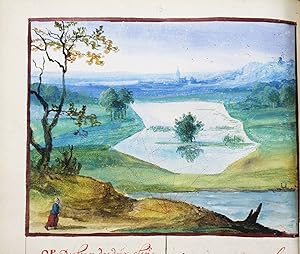
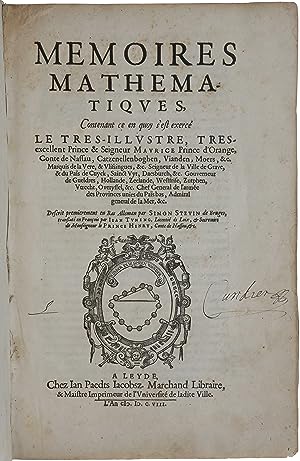
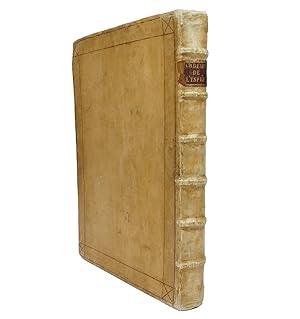
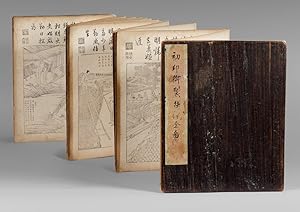
![Image du vendeur pour Introduction en l'art analytic, ou Nouuelle algebre de François Viete. Oeuure dans lequel sont veus les plus miraculeux effects des sciences mathematiques, pour l'inuention & solution, tant des problemes, que theoremes, proposez en icelles. Traduit en nostre langue & commenté & illustré d'exemples. Paris: J. Jacquin, 1629. [Bound with:] VIÈTE, François; VAULEZARD, Jean-Louis (translator). Les cinq livres des Zetetiques de Francois Viette. Mis en francois, commentez et augmentez des exemples du poristique, & exegetique, parties restantes de l'analitique. Soit que l'exegetique, soit traitté en nombres ou en lignes. Paris: J. Jacquin, 1630. [Bound with:] VAULEZARD, Jean-Louis. Examen de la Traduction faicte par Anthoine Vasset, des cinq Livres des Zetetiques de M. Viette. Paris: n.p. [J. Jacquin?], 1631 mis en vente par SOPHIA RARE BOOKS](https://pictures.abebooks.com/inventory/md/md22861563599.jpg)
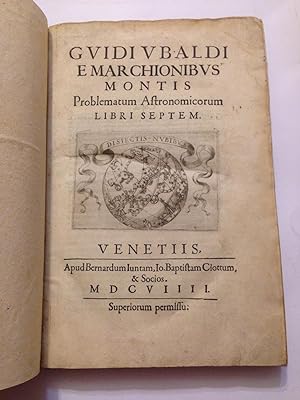

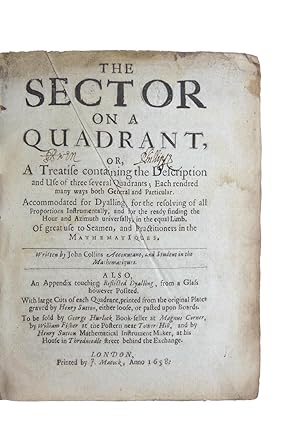
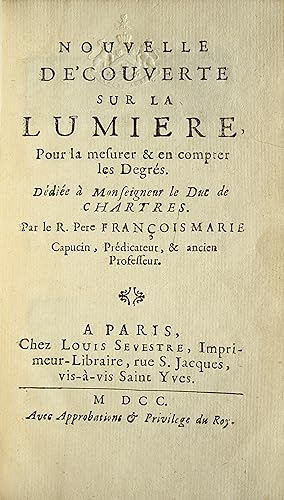
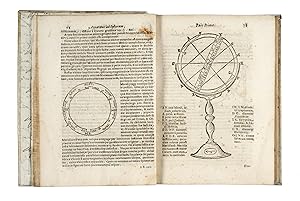
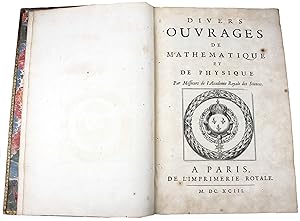
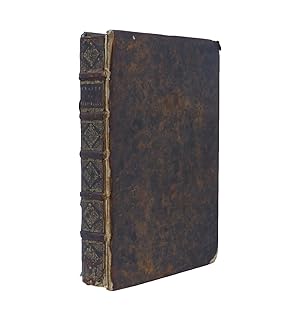

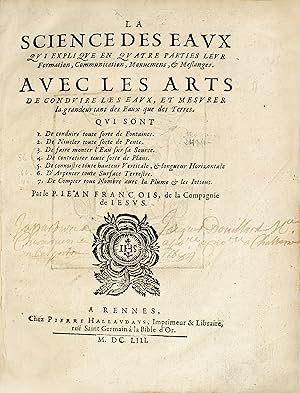
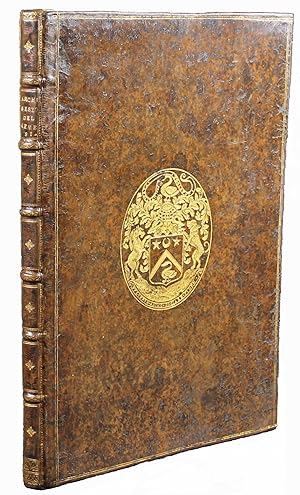
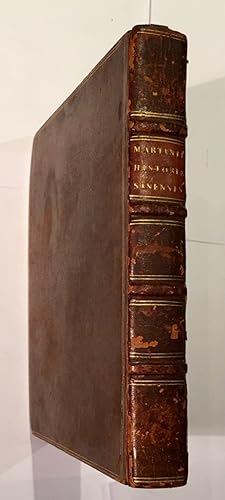
![Image du vendeur pour WELLS, John. Sciographia, or the art of shadowes. Plainly demonstrating, out of the sphere, how to project both great and small circles, upon any plane whatsoever [With] BRIGGS, Henry. Table des logarithmes, pour les nombres d un, à 10000 mis en vente par Sokol Books Ltd. ABA ILAB](https://pictures.abebooks.com/inventory/md/md30721397443.jpg)
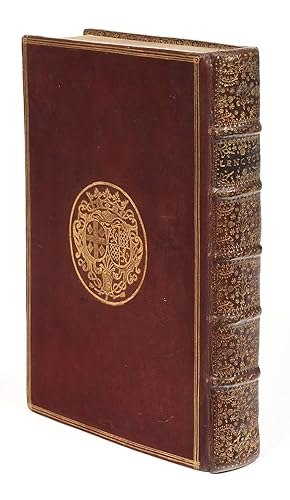
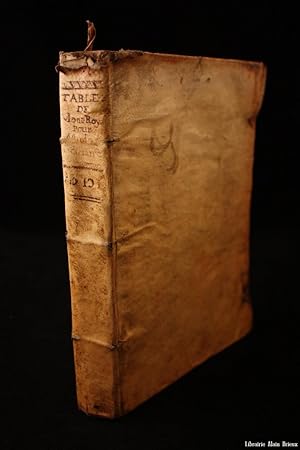
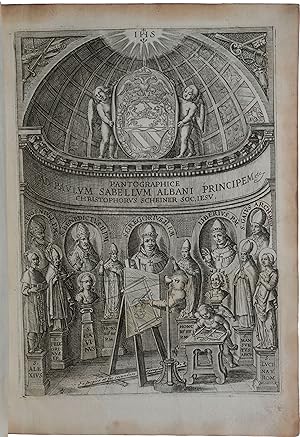
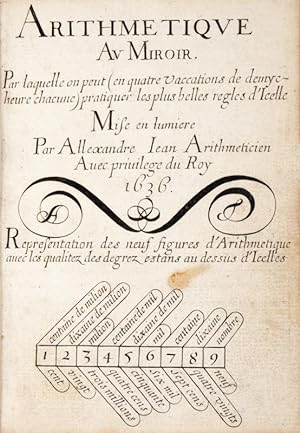
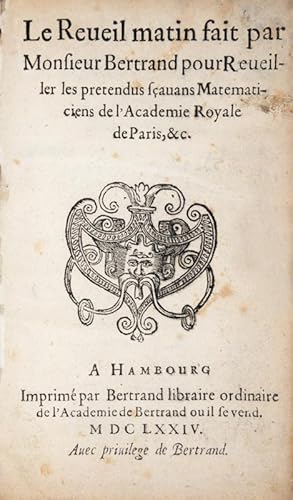
![Image du vendeur pour Elémens de Géométrie à Lusage des Enfans de France [ Manuscrit : Eléments de Géométrie à l'usage des Enfants de France ] mis en vente par Librairie du Cardinal](https://pictures.abebooks.com/inventory/md/md12418038343.jpg)
